Dantsuka Clinic
This is a clinic and residence built in front of a station in the suburbs of Tokyo. The clinic occupies the first to third floors and the fourth and fifth floors are used as the owners residence. Here, furniture-like boxes are set into slabs and we proposed an architecture that can respond to the requirements of internal activities just through the arrangement of those boxes.
Structurally, the central core bears the lateral load, while H-section steel columns bear the vertical load. The core is used for the operating room and x-ray room in the clinic, and as large storage space in the residential part. The columns are set in 2m from the outside wall thus, from the exterior, it looks like the slabs and boxes are floating. Also, we put photographs on the wall surface using people from the clinic as models. It is our hope that those photographs will become a sign portraying the role of this building as a local medical facility.
Structurally, the central core bears the lateral load, while H-section steel columns bear the vertical load. The core is used for the operating room and x-ray room in the clinic, and as large storage space in the residential part. The columns are set in 2m from the outside wall thus, from the exterior, it looks like the slabs and boxes are floating. Also, we put photographs on the wall surface using people from the clinic as models. It is our hope that those photographs will become a sign portraying the role of this building as a local medical facility.
Function
Clinic and residence
architects
Riken Yamamoto & Field Shop
structural eng.
Plus One Structural Des. & Eng. Firm
Site area
619 ㎡
Building area
227 ㎡
Floor area
999 ㎡
Structure
Rainforced concrete
construction
2002.
ESSES Gallery
ESSE Gallery
construction
1984.
FRC Building
FRC Building
GAZEBO
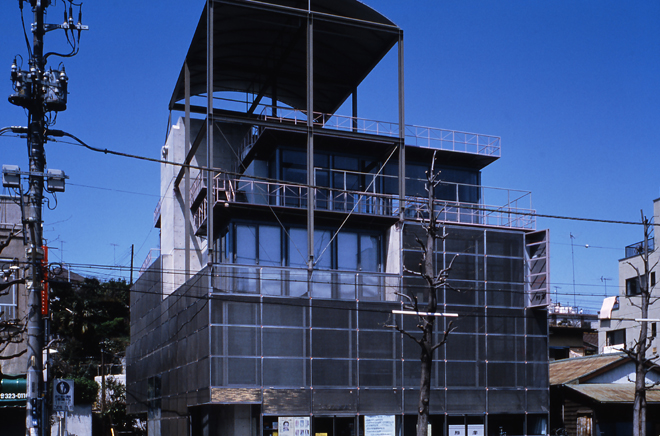
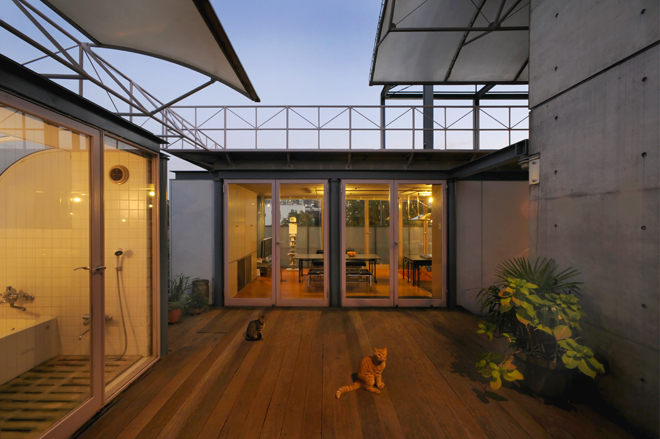
Gazebo is my own house in Yokohama. I always wake up around 6:30 in the morning. I feed the goldfish and clean the cat litter box. I make juice with apples, oranges and cabbage. I can see the rooftop of the house across the alley when I feed the goldfish because the goldfish bowl is on the fourth-floor terrace. The rooftop of the three-story building across the alley is filled to the brim with various plants. I exchange morning greetings with the old lady who is watering those plants or hanging wash on the rooftop. It’s getting quite warm, isn’t it? While I am at it, I greet the old lady who is hanging wash on the rooftop two houses away as well.
The everyday life of the local community takes place about four floors above ground level.
The everyday life of the local community takes place about four floors above ground level.
Function
Store, Office, Apartment building, Housing
architects
Riken Yamamoto & Field Shop
structural eng.
Kojima Design
structural mech.
Nippo Kogyo
Site area
229 ㎡
Building area
210 ㎡
Floor area
664 ㎡
Structure
Rainforced concrete
construction
1986.3
HAMLET
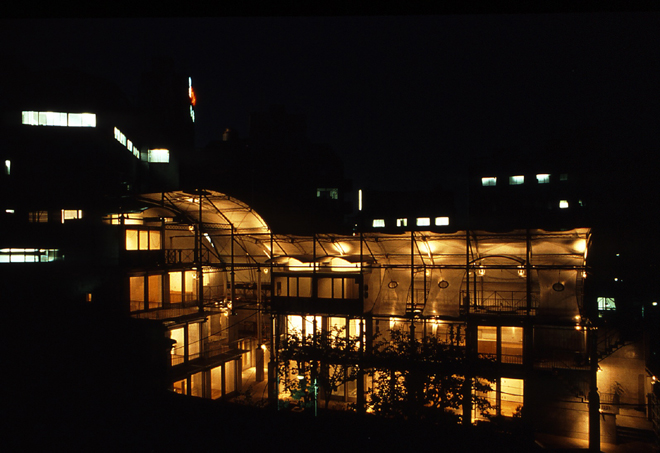
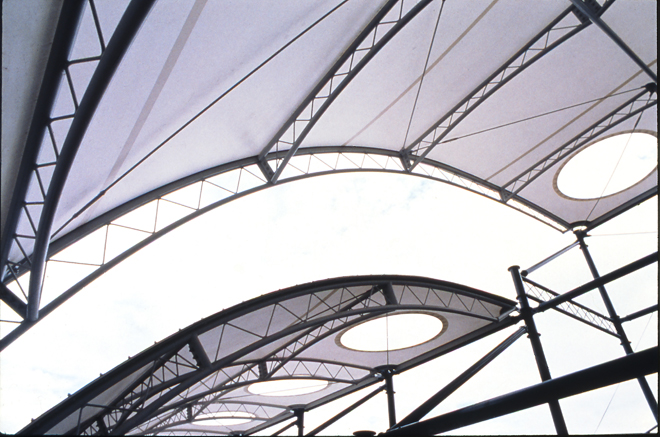
This is a three-generation, three-household house in Setagaya, a central district of Tokyo. The area was once an excellent residential district; however, from around 1990 land prices have been rising, and the area is changing into an office district. That will eventually happen here as well. To continue to live here, therefore, the parents and the three children who had already married decided to live together. The parents unit and the unit for the second son are on the first floor, the unit for the oldest daughter is on the second floor, and the unit for the oldest son is on the third floor. Each household occupies a floor of its own.
The building is like an apartment building in that each household has its own floor, but it is also like a single house for an extended family in that rooms on all floors are related in the same way in the horizontal direction, that is from the street to the innermost parts of the building. A large roof made of teflon tents covers the entire building. This is like an archetypal house, demonstrating how people who choose to live together might dwell. Hamlet of course means a small village.
The building is like an apartment building in that each household has its own floor, but it is also like a single house for an extended family in that rooms on all floors are related in the same way in the horizontal direction, that is from the street to the innermost parts of the building. A large roof made of teflon tents covers the entire building. This is like an archetypal house, demonstrating how people who choose to live together might dwell. Hamlet of course means a small village.
Function
Housing
architects
Riken Yamamoto & Field Shop
Site area
499 ㎡
Building area
233 ㎡
Floor area
561 ㎡
construction
1988.6
ROTONDA
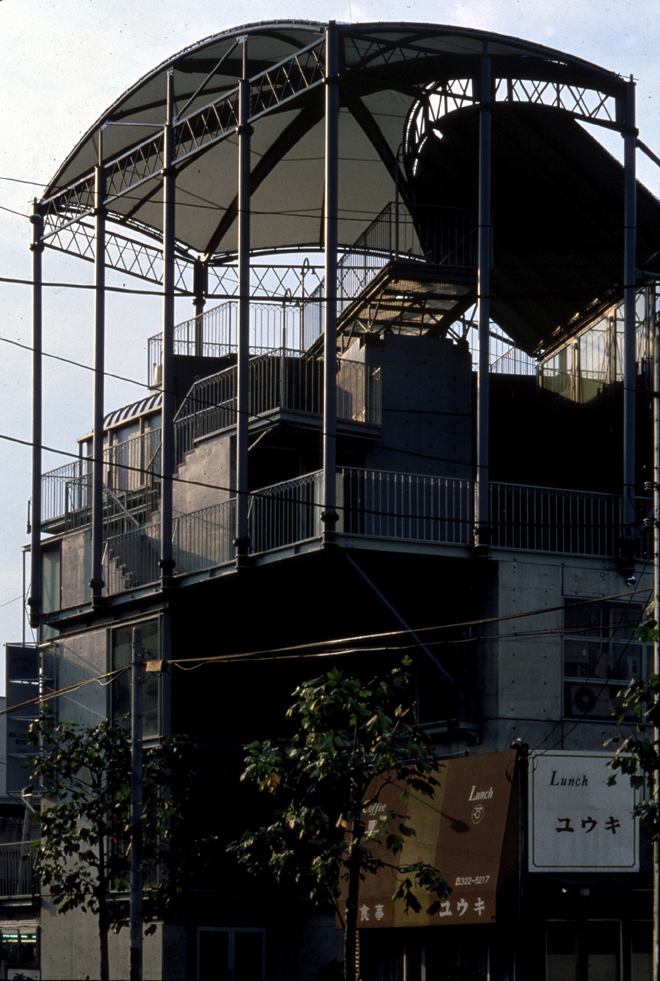
ROTONDA
architects
Riken Yamamoto & Field Shop
Site area
266 ㎡
Building area
230.4 ㎡
Floor area
849.4 ㎡
construction
1987.3
Parcel D5 Project
Parcel D5
construction
2009.
Amsterdam Gershwin block 2b
Gershwin block 2P
construction
2007.
Ecoms House
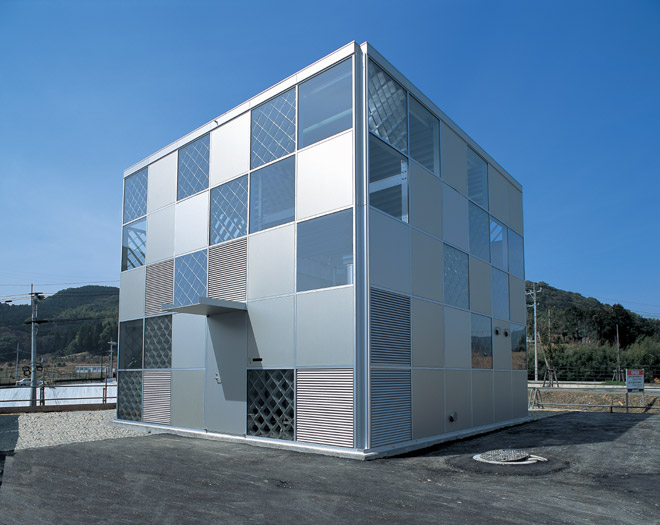
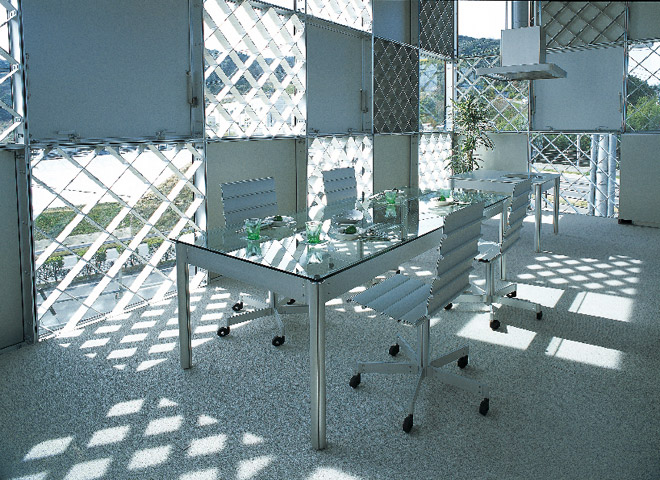
This is a development project for a building with an aluminum structure that could be mass-produced. It started with a request from the firm SUS which produces precision instruments with aluminum frames. Making 1200-square-mm panels at a factory, leaving no process to be executed on site, and proposing a system which enables panels to be assembled with bolted connections, all lead to a construction period and a lower cost.
Our intention in developing an architecture of aluminum is to find a way to achieve a new structural expression which would not be possible with steel. Aluminum is so flexible that it can be extruded to any shape very precisely and easily. The structural wall consists of cross-shaped extruded aluminum panels that have connection joints with a fit system at their edges. The first aluminum house opened in Tosu, Kyushu as a model house
Our intention in developing an architecture of aluminum is to find a way to achieve a new structural expression which would not be possible with steel. Aluminum is so flexible that it can be extruded to any shape very precisely and easily. The structural wall consists of cross-shaped extruded aluminum panels that have connection joints with a fit system at their edges. The first aluminum house opened in Tosu, Kyushu as a model house
Function
Office, Model House
architects
Riken Yamamoto & Field Shop
structural eng.
Iijima Structural Design Office
structural mech.
Sogo Consultants
construction
2004.6
SUSTRG Office Project

Function
Exhibition room, Office
construction
2005.
Floor area
200000 ㎡
construction
2009.9
Glass Table
Glass Table
construction
1998.
Kirara Hikari-ga-oka shop
Kirara Hikari-ga-oka shop
architects
Riken Yamamoto & Field Shop
Site area
1095.72 ㎡
Building area
233.9 ㎡
Floor area
233.9 ㎡
construction
1986.
Dragon Lily House
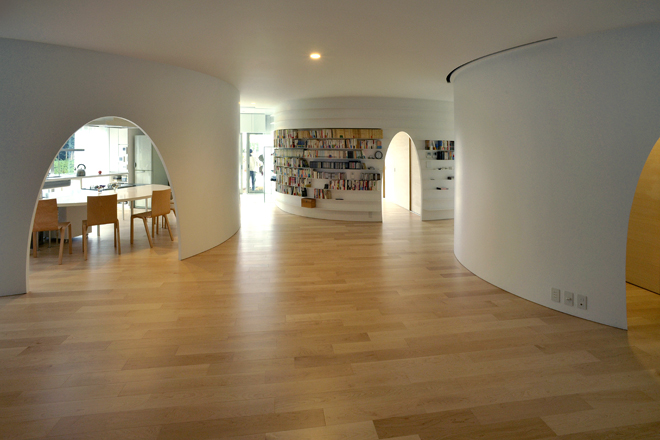
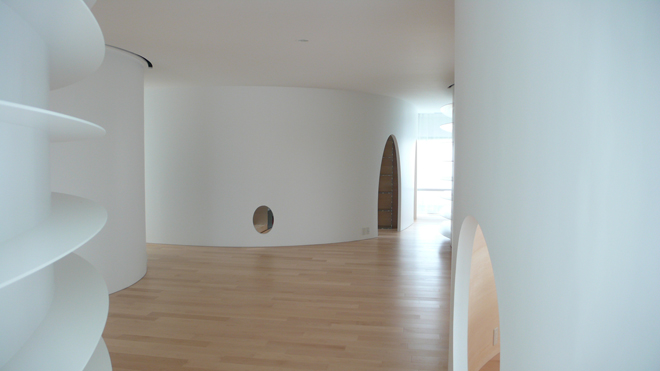
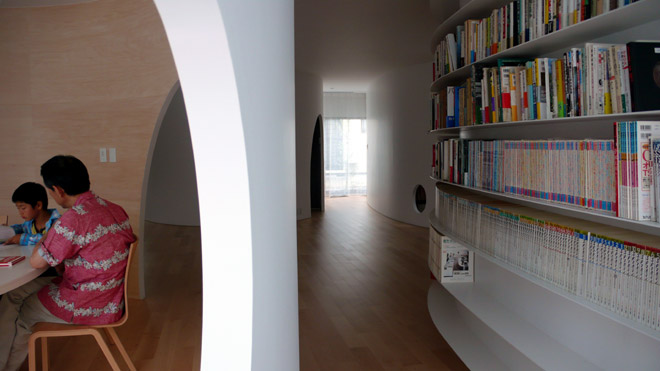
This is a house for Dragon Lily and her family.
The site is located in the corner of a mildly dense town. Villas with gardens and big factories here and there surround it. The site enjoys a good view, facing the row of trees grown by the railway.
Here five pieces of curved walls are stand up. the space created between the five walls is called "lounge". The lounge radiates through the curved walls and stretches to outside smoothly. The inner part of the curved walls is dedicated to the dining room, kitchen, bedroom and garage. All these spaces face outside, along the curved walls.
Glass windows cover the outer part of the house.
Function
Private House
architects
Riken Yamamoto & Field Shop
structural eng.
Jun Sato Structural Design Office
structural mech.
Dan Equipment Design Company
Site area
330 ㎡
Building area
197 ㎡
Floor area
197 ㎡
construction
2008.10
Namics Techno Core
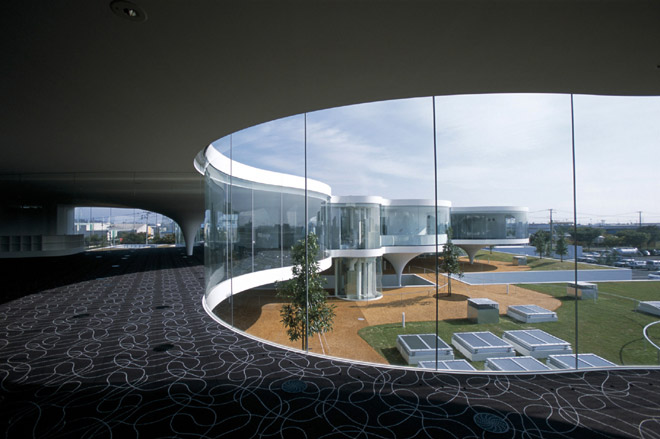
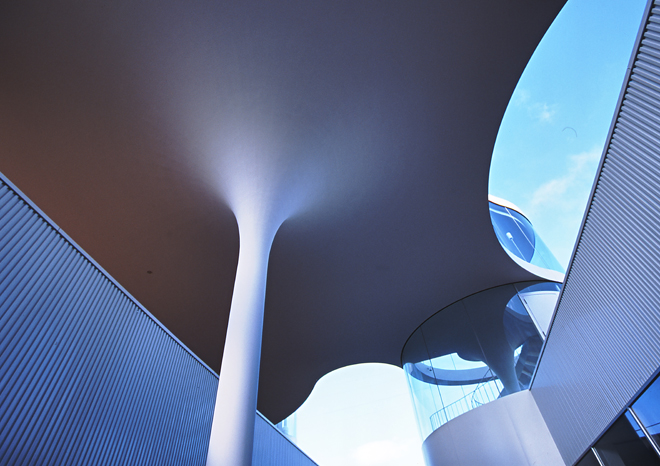
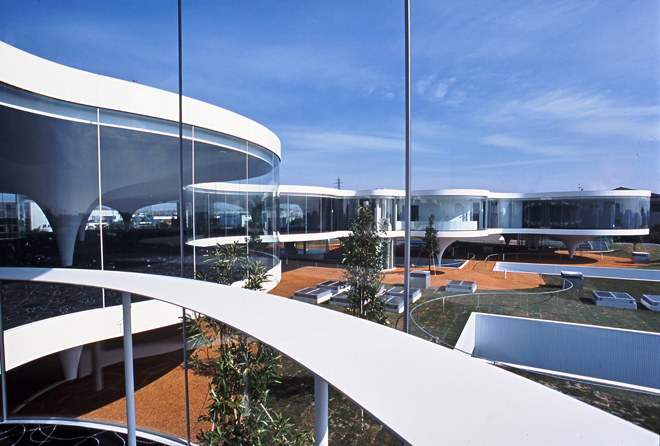
This project is a researching laboratory for the developer and manufacturer of the paste, used for protecting battery parts and printing wires on semi-conductor foundations.
The whole site on the first level is dedicated to the experimental rooms. The green roof of the experimental rooms is designed as a garden for the researchers, while the planted roof decreases the conditioning system load of the space in below.
On the top of this roof a totally different structural system is designed.
The structure body consists of reversed cones like a "top", with 7m diameters in maximum. In this system every three tops are gathered to support each other. By connecting the tops with different diameters, a table-like structural body is created. Two structural bodies piling up each other, make up two levels. The upper level is the office.
The pin joints of the tops cancel the bending moment, allowing the top to have a section of only 250 fai on its thinnest part. With no pillars on its outer part, the structure seems as if it is floating in the air.
The whole site on the first level is dedicated to the experimental rooms. The green roof of the experimental rooms is designed as a garden for the researchers, while the planted roof decreases the conditioning system load of the space in below.
On the top of this roof a totally different structural system is designed.
The structure body consists of reversed cones like a "top", with 7m diameters in maximum. In this system every three tops are gathered to support each other. By connecting the tops with different diameters, a table-like structural body is created. Two structural bodies piling up each other, make up two levels. The upper level is the office.
The pin joints of the tops cancel the bending moment, allowing the top to have a section of only 250 fai on its thinnest part. With no pillars on its outer part, the structure seems as if it is floating in the air.
Function
Research Center
architects
Riken Yamamoto & Field Shop
structural eng.
Arup Japan
structural mech.
Nichiei Architects
Site area
21.367 ㎡
Building area
6.894 ㎡
Floor area
8.844 ㎡
construction
2009.10
Pangyo Housing

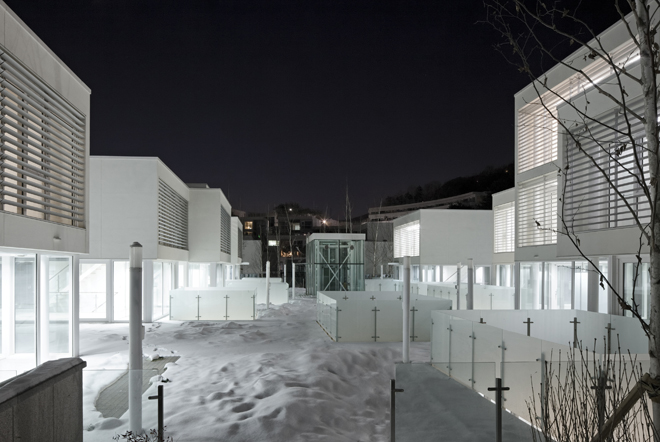
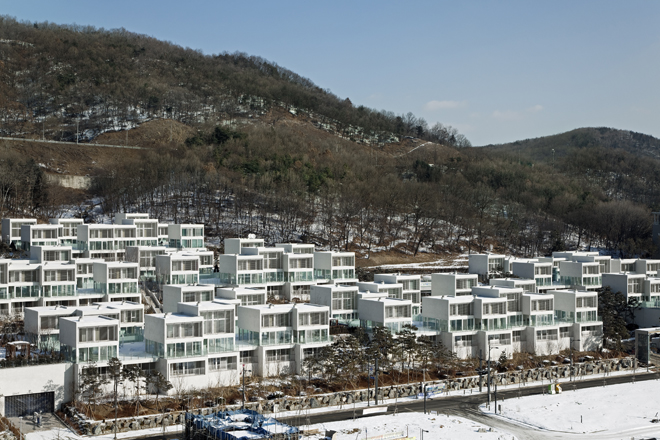
Korea National Corporation held an international competition by invitation for designing a creative and environmental-friendly low-rise multi family housing project in the new town of Pan-Gyo in February 2006.
Pekka Helin (Finland), Mark Mack (U.S.A) and us were selected as the final architects.
We proposed two ideas, siting the whole architecture in clusters, and making a communal deck.
There are totally 9 clusters in the site. Each cluster consists of around 9-13 residential units, with 3-4 stories. The communal deck on the second level connects the transparent space in each housing unit called "Shiki".
Shiki is more like a huge porch, which can be used as a drawing room, Home Office, atelier and many other functions. It enables the clusters to fit to the characteristics of the surrounding environment in this way.
Pekka Helin (Finland), Mark Mack (U.S.A) and us were selected as the final architects.
We proposed two ideas, siting the whole architecture in clusters, and making a communal deck.
There are totally 9 clusters in the site. Each cluster consists of around 9-13 residential units, with 3-4 stories. The communal deck on the second level connects the transparent space in each housing unit called "Shiki".
Shiki is more like a huge porch, which can be used as a drawing room, Home Office, atelier and many other functions. It enables the clusters to fit to the characteristics of the surrounding environment in this way.
Function
Collective Housing
architects
Riken Yamamoto & Field Shop+Kunwon (Korean collaborator)
structural eng.
Structural Design Office Plus One Co., Ltd.
structural mech.
SOGO Consultants
Site area
29135 ㎡
Building area
14.000 ㎡
Floor area
34.000 ㎡
Structure
RC+ Steel
construction
2010.11
other
Copyright : Koichi Satake
Ban Building
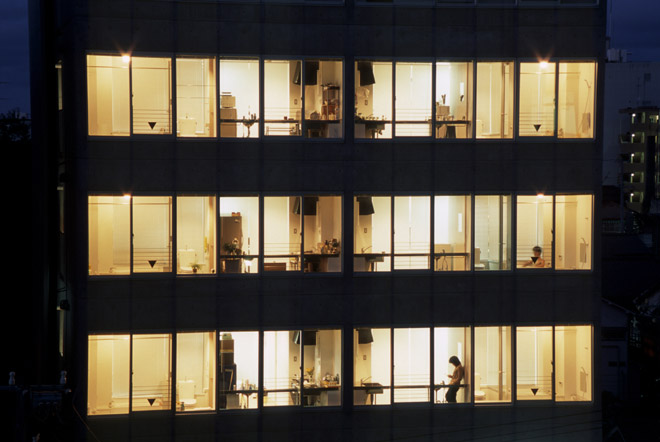
Up until the present, collective housing has been designed on the premise that each residence is an independent unit. The role of the architect has just been considering how to line them up, that is, arranging the residences and thinking up plan variations. The element that brought them to recognition was the door to each unit. With a single steel door, an almost perfectly sealed-off space is created. We wanted to open up those sealed places to the outside even slightly and make the areas around the entrances flexible, because if they are also used as offices or galleries there is no longer necessarily any need for steel doors.
For that reason, contrary to standard practice, we place the bathroom and kitchen along the window. As a result, the bathroom has a fine view and can also be used as a drying room. Also, even when light entering via the bathroom, the interior is brightly lit. In this studio apartment project in Nigata, those ideas where put into practice.
For that reason, contrary to standard practice, we place the bathroom and kitchen along the window. As a result, the bathroom has a fine view and can also be used as a drying room. Also, even when light entering via the bathroom, the interior is brightly lit. In this studio apartment project in Nigata, those ideas where put into practice.
architects
Riken Yamamoto & Field Shop
structural eng.
Plus One Structural Des. & Eng. Firm
Site area
278 ㎡
Building area
214 ㎡
Floor area
1565 ㎡
construction
2001.5
Fujii Gallery
Fijii Gallery
architects
Riken Yamamoto & Field Shop
Floor area
88 ㎡
construction
1987.8
Marufuji (The Kosaku Store)
Marufuji (The Kosaku Store)
architects
Riken Yamamoto & Field Shop
Site area
2386.92 ㎡
Building area
1395.31 ㎡
Floor area
1505.31 ㎡
construction
1987.11
Marufuji (The Minamidenen Store)
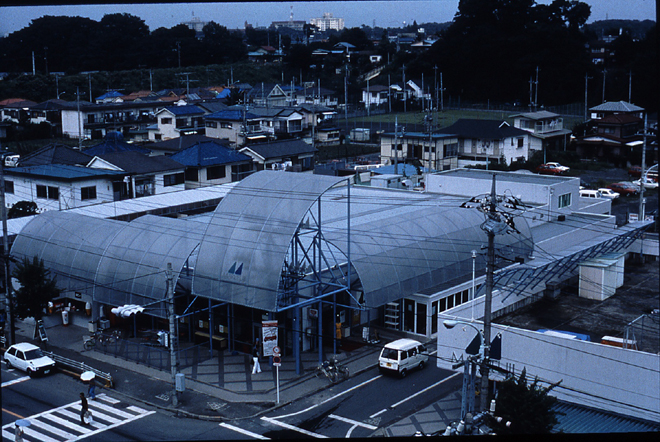
architects
Riken Yamamoto & Field Shop
Site area
1.374 ㎡
Building area
1.176 ㎡
Floor area
1.243 ㎡
construction
1986.
Utsunomiya University Center for Optical Research & Education
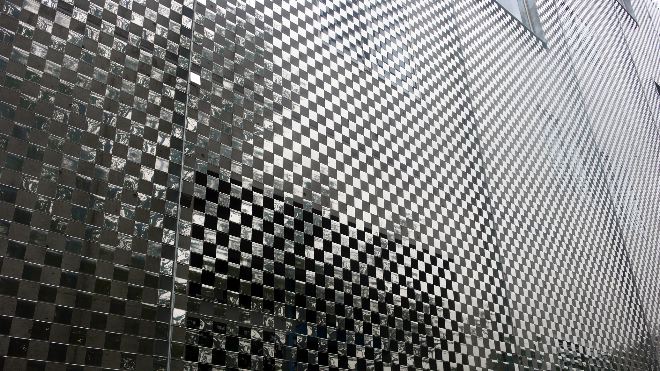
It is a facility for research and education of the optical technology and the facade design wanted to be a symbol. The wire that was taken out from the outer wall of the building body is suspended in a checkered pattern stainless steel plate of 100mm square, as a very simple facade. Mirror is applied on the surface of the stainless steel plate to reflect the landscape.
Thin plates of 0.5mm thickness are hung in a wire in the side, sway to and fro when the wind blows. That landscape reflected is always changing, per way of light and season, show various expressions by a change in the flow of the wind.
Thin plates of 0.5mm thickness are hung in a wire in the side, sway to and fro when the wind blows. That landscape reflected is always changing, per way of light and season, show various expressions by a change in the flow of the wind.
Function
University
architects
Riken Yamamoto & Field Shop
structural eng.
Plus One Structural Des. & Eng. Firm
structural mech.
Kankyo Engineering
Site area
171.166 ㎡
Building area
504 ㎡
Floor area
1.984 ㎡
Structure
Reinforced concrete
construction
2009.10
other
Copyright: Riken Yamamoto & Field Shop
Yokosuka Museum of Art
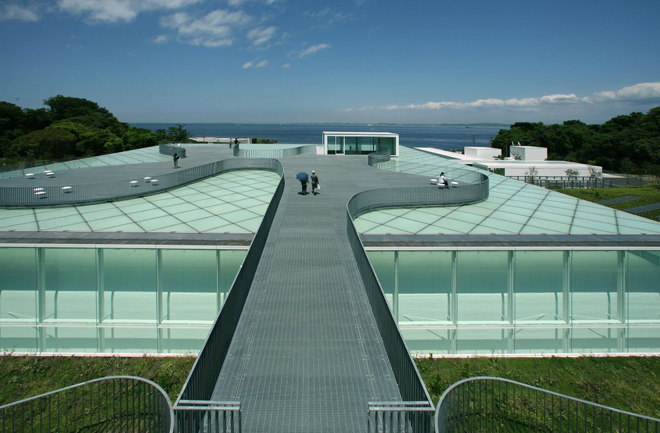
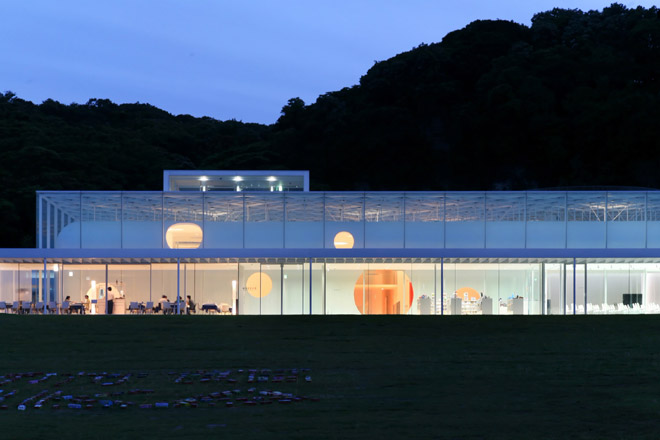
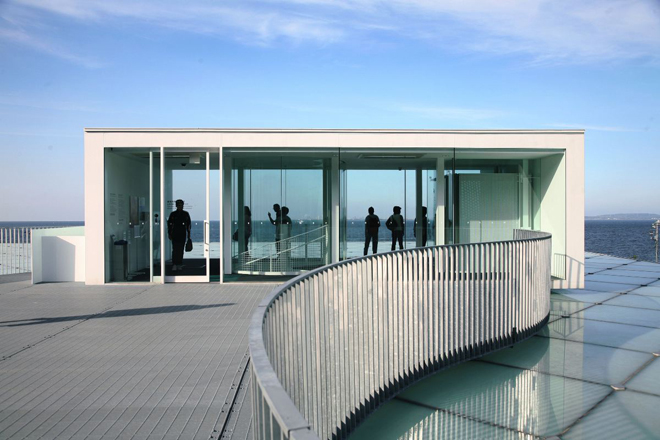
Through a Quality Based Selection in 2002, which was the first trial run by the city of Yokosuka as a Japanese municipality, we were chosen to plan a museum. The design started from scratch, and was developed through discussions with many people, including museum curators, for over 2 years.
Facing the sea to the north and surrounded by mountains, the site has the valley topography typical of Yokosuka. We buried most of the architectural volume in the ground to create a museum in communication with the natural landscape. The interior space is planned as nested boxes: the edge part is for open public facilities such as restaurants and workshop rooms; the central part is for sensitive facilities for exhibition and collection. This system solves the severe environmental problems associated with the seaside site.
The double skin of roof and wall, consisting of glass plate outside and iron board inside, covers the area for exhibition and collection, and is a system to control sunlight. Walking around the interior space overlaid with this huge double skin, visitors can experience not only the exhibition itself but also the various activities connected with art.
Facing the sea to the north and surrounded by mountains, the site has the valley topography typical of Yokosuka. We buried most of the architectural volume in the ground to create a museum in communication with the natural landscape. The interior space is planned as nested boxes: the edge part is for open public facilities such as restaurants and workshop rooms; the central part is for sensitive facilities for exhibition and collection. This system solves the severe environmental problems associated with the seaside site.
The double skin of roof and wall, consisting of glass plate outside and iron board inside, covers the area for exhibition and collection, and is a system to control sunlight. Walking around the interior space overlaid with this huge double skin, visitors can experience not only the exhibition itself but also the various activities connected with art.
Function
Museum
architects
Riken Yamamoto & Field Shop
structural eng.
Plus One Structural Des. & Eng. Firm
structural mech.
Sogo Consultants
Site area
703.646 ㎡
Building area
4.234 ㎡
Floor area
12.095 ㎡
construction
2006.
Osanbashi Yokohama International Passenger Terminal
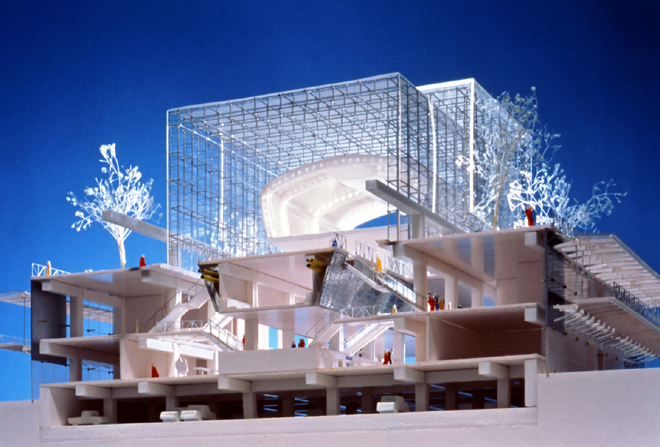
Osanbashi Yokohama International Passenger Terminal
construction
1995.
Yokohama Public Housing
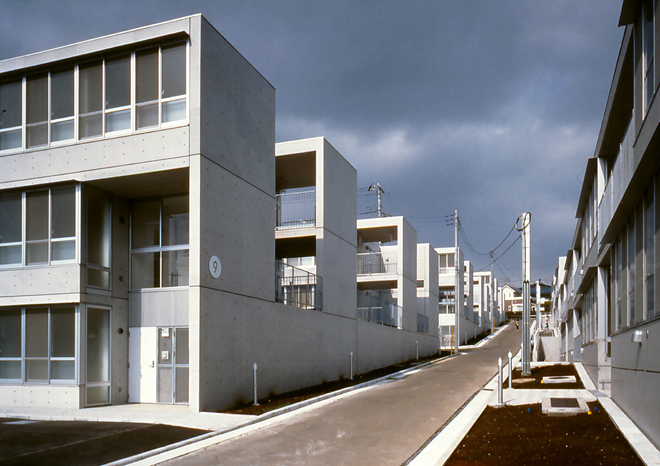

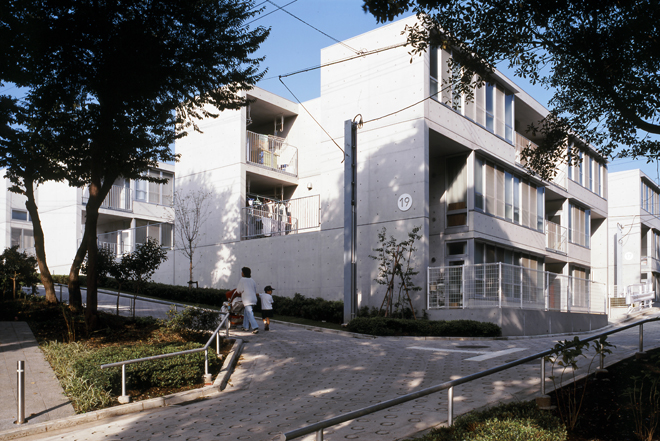
This is a project to rebuild public housing administered by Yokohama; 22 apartment buildings with 124 units will be newly constructed. Many seniors used to live in old wooden-construction housing built around 1950. Even after completion of the project, more than half the occupants, who will include both new applicants and relocated former residents, will be seniors living alone. The site is on a west-facing slope and is divided by roads into 13 blocks. We were asked to design on this site collective housing that is low-rise, high-density and low-cost.
We decided that ten housing units sharing a common space would form a community; that community is the cluster unit from which the entire project is organied. Services such as care and mobile stores are provided at that community level. Parking spaceis prepared for that purpose. We were asked to pack in as many housing units as possible into the project, but by setting aside ample areas for open spaces and terraces, we managed to create spaces that feel much roomier than their floor areas would suggest.
We decided that ten housing units sharing a common space would form a community; that community is the cluster unit from which the entire project is organied. Services such as care and mobile stores are provided at that community level. Parking spaceis prepared for that purpose. We were asked to pack in as many housing units as possible into the project, but by setting aside ample areas for open spaces and terraces, we managed to create spaces that feel much roomier than their floor areas would suggest.
Function
Public Housing
architects
Riken Yamamoto & Field Shop
structural eng.
Plus One Structural Des. & Eng. Firm
Site area
12.625 ㎡
Building area
4.704 ㎡
Floor area
7.600 ㎡
construction
2000.3
Yokohama Zoo Restaurant
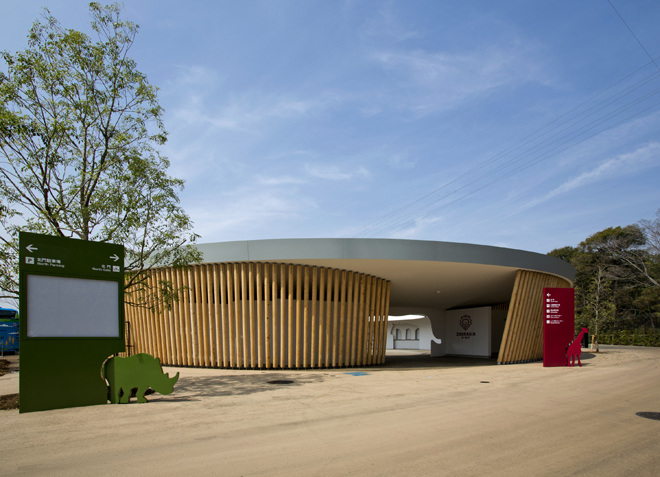
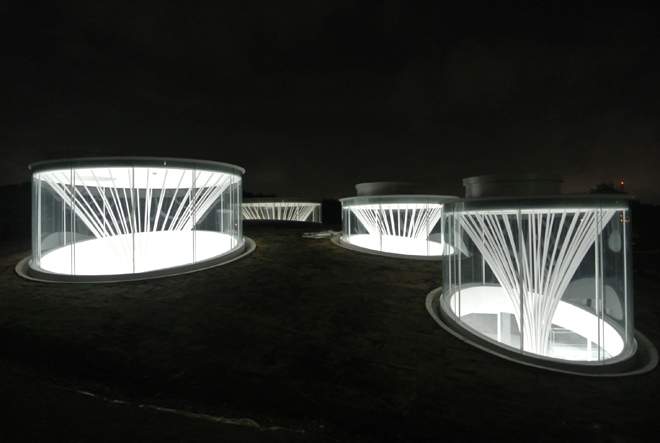

Function
Restaurant, Office, Exhibition
Site area
1030881 ㎡
Building area
1000 ㎡
Floor area
1000 ㎡
construction
2013.07
Sky Tree at Yokohama Expo 89
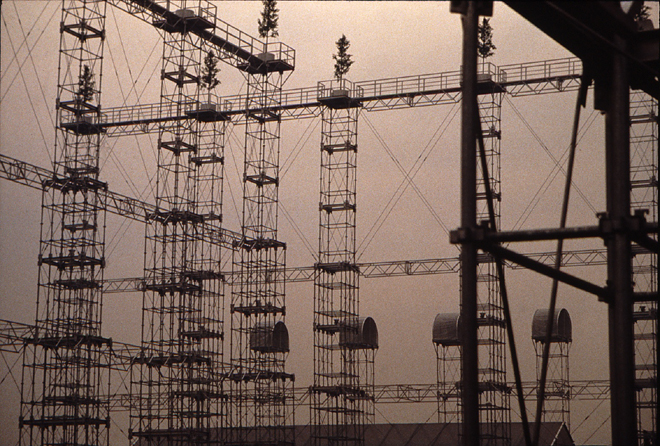
This is a facility built as part of one of the four gates for the Yokohama Expo 1989, the Takashima-cho gate, containing the offices, concession stands, resting spaces in other words, the Expo backroom. From the outset, the gate itself was located in a backroom-like area.
Given this, we thought of making an architecture that could have some transformative power upon the vague landscape of the site. A tall building that could draw people coming from the station. Using leasing scaffolding material, we combined 42 29-metre-high towers and 13 17-metre-high towers capped with trees to form a colonnade sourronding the pre-fabricated facilities. With this vast wall, composed of small parts, wich by day appeared skeletal and transparent, and wich at night revealed iluminated trees at its top levels, we generated a kind of landscape. At the conclusion of the expo, the scaffolding materials were disassembled and returned to their origin.
Given this, we thought of making an architecture that could have some transformative power upon the vague landscape of the site. A tall building that could draw people coming from the station. Using leasing scaffolding material, we combined 42 29-metre-high towers and 13 17-metre-high towers capped with trees to form a colonnade sourronding the pre-fabricated facilities. With this vast wall, composed of small parts, wich by day appeared skeletal and transparent, and wich at night revealed iluminated trees at its top levels, we generated a kind of landscape. At the conclusion of the expo, the scaffolding materials were disassembled and returned to their origin.
Function
Pavilion
architects
Riken Yamamoto & Field Shop
Building area
5500 ㎡
Floor area
5300 ㎡
construction
1989.
House in Okayama2
House in Okayama2
Function
private house
Site area
692.25 ㎡
construction
2001.
House in Okayama
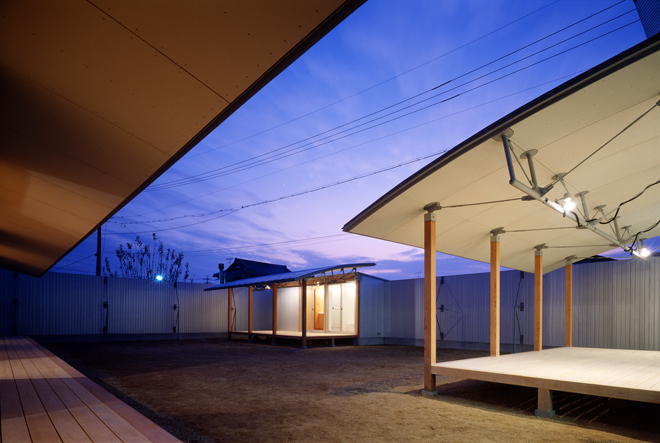
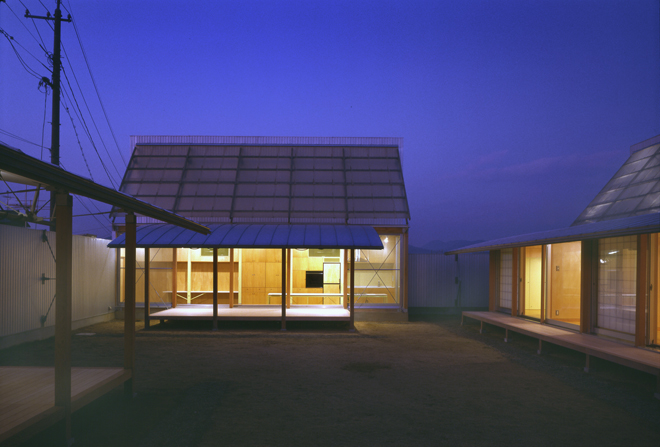
This is a house for a couple and their daughter, who was still in elementary school at the time. The front entrance leads to a long space similar to a doma, the earthen-floored work space of a traditional house. Three private rooms are arranged facing the doma. Beyond those three private rooms there is a courtyard where spaces such as the kitchen, bathroom and washroom are arranged in. The entire house takes a “divided-building”form (i.e. it is composed of separate structures).
The rooms surround the courtyard. This courtyard is designed to be quite closed toward the outside world, much like the central open space in Hotakubo Daichi Housing Project. Riken Yamamoto sets out to create this sort of relationship: three private rooms open to the outside, and a courtyard beyond them that is closed. It is an expression of his idea of a community based on thresholds.
The rooms surround the courtyard. This courtyard is designed to be quite closed toward the outside world, much like the central open space in Hotakubo Daichi Housing Project. Riken Yamamoto sets out to create this sort of relationship: three private rooms open to the outside, and a courtyard beyond them that is closed. It is an expression of his idea of a community based on thresholds.
Function
Private House
architects
Riken Yamamoto & Field Shop
Site area
507.33 ㎡
Building area
166.37 ㎡
Floor area
166.37 ㎡
construction
1992.
Shimoizumi Community Center/Shimoizumi Care Center
Function
District Center
architects
Riken Yamamoto & Field Shop
structural eng.
Plus One Structural Des. & Eng. Firm
Site area
3.887 ㎡
Building area
1.920 ㎡
Floor area
3.106 ㎡
Structure
Rainforced concrete
construction
1996.12
Odawara Public Hall
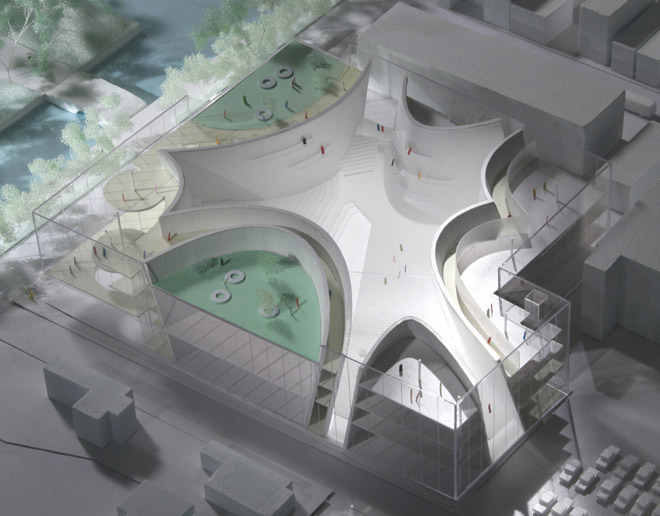
The site is located in front of the remains of Odawara castle. The whole consists of a main hall with 1360 seats, a sub-hall with maximum 300 seats, an open lobby, which can be used freely by public, and practice rooms.
The main hall is designed, regarding the acoustic efficiency for the classic concerts. Here we used 8 convex HP shell as walls, which are effective in diffusing the sound.
By setting up a movable proscenium stage, it is possible to change the hall into arena style, in which the seats surround the performer on the stage.
Odawara Public Hall
Function
hall
architects
Riken Yamamoto & Field Shop
structural eng.
Jun Sato structural design office
structural mech.
Sogo Consultant
Site area
5806 ㎡
Building area
4127 ㎡
Floor area
9413 ㎡
construction
2005.
Kamomachi Coltural Hall
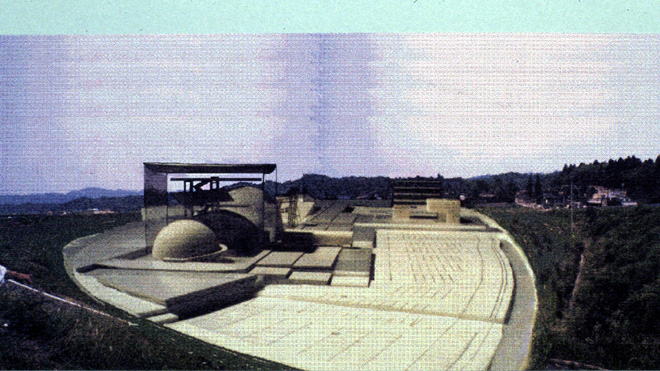
Kamogawa Cultural Hall
construction
1992.
Seaside House
On a gentle slope facing the sea, is located the site of long-stay hotels.
A place where the sea spreads before eyes and it is famous for its extremely beautiful sunset. In such a site, the main theme was how to make the architecture open to outside.
By arranging the square guest rooms of 5.75*5.75 m2 in zigzag order, while adapting them with the shape of the site, it becomes possible to keep the view to the sea from each room.
The outside deck connects the guest rooms on the first floor, creating a space for different activities to enjoy the sea. Huge windows are designed on the second and third floors, making a connection between rooms and surrounding environment, specially the sea.
This hotel, the Sea House, is first defined by its close connection with the sea.
A place where the sea spreads before eyes and it is famous for its extremely beautiful sunset. In such a site, the main theme was how to make the architecture open to outside.
By arranging the square guest rooms of 5.75*5.75 m2 in zigzag order, while adapting them with the shape of the site, it becomes possible to keep the view to the sea from each room.
The outside deck connects the guest rooms on the first floor, creating a space for different activities to enjoy the sea. Huge windows are designed on the second and third floors, making a connection between rooms and surrounding environment, specially the sea.
This hotel, the Sea House, is first defined by its close connection with the sea.
Seaside House
Function
hotel
architects
Riken Yamamoto & Field Shop
structural eng.
Structural Design Plus one
structural mech.
Sogo Consultants
Site area
1847.63 ㎡
Building area
356.13 ㎡
Floor area
1837.13 ㎡
construction
2006.
House in Katsushika
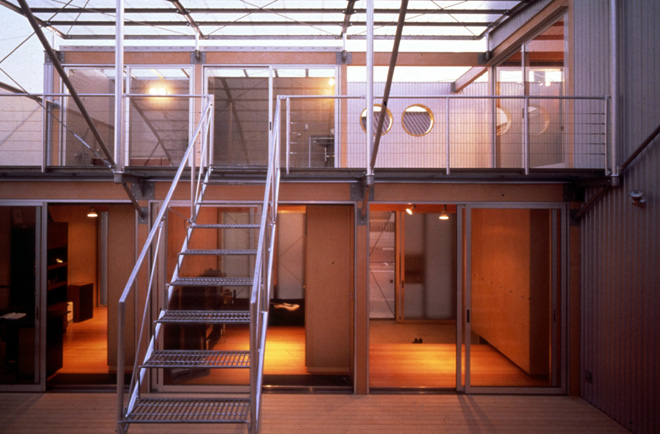
House in Katsushika
architects
Riken Yamamoto & Field Shop
Site area
164.71 ㎡
Building area
98.33 ㎡
Floor area
130.56 ㎡
construction
1992.1
House in Kamakura
House in Kamakura
architects
Riken Yamamoto & Field Shop
Site area
365.84 ㎡
Building area
127.83 ㎡
Floor area
155.91 ㎡
Guan Yuan Housing
Located in Beijing, in the west second ring road, this project consists of residential apartments with stores on the lower levels. The West second ring road is surrounded by various types of buildings, a financial district with new office buildings in it, and protected area of Siheyuan (a type of Chinese residence with a courtyard surrounded by four buildings). Five towers with different heights are planned along north-south direction.
In the center of the site a square with a gentle slope (+1.8to -5.5m) is designed as a connector between underground and ground level. The extension of the landscape stretches into the buildings like allies, unfolding to the second floor three dimensionally. By making the huge square and solid allies open to outside, a new city environment involved with its surrounding is created.
In the center of the site a square with a gentle slope (+1.8to -5.5m) is designed as a connector between underground and ground level. The extension of the landscape stretches into the buildings like allies, unfolding to the second floor three dimensionally. By making the huge square and solid allies open to outside, a new city environment involved with its surrounding is created.
architects
Riken Yamamoto & Field Shop
structural eng.
Atsushi Sato Structural Design Office
Site area
24.532 ㎡
Building area
9.342 ㎡
Floor area
138.600 ㎡
construction
2008.6
Iwadeyama Junior High School
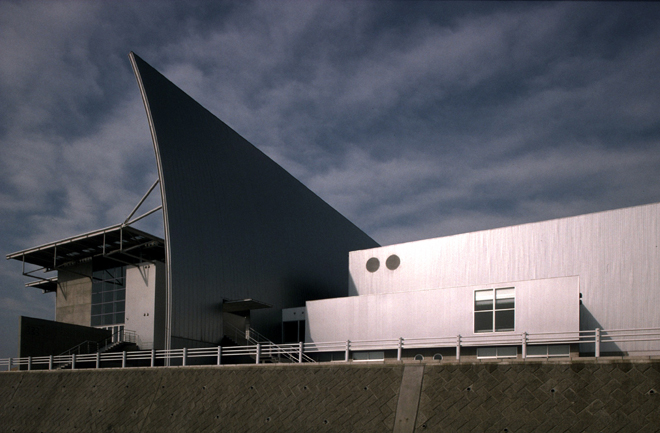
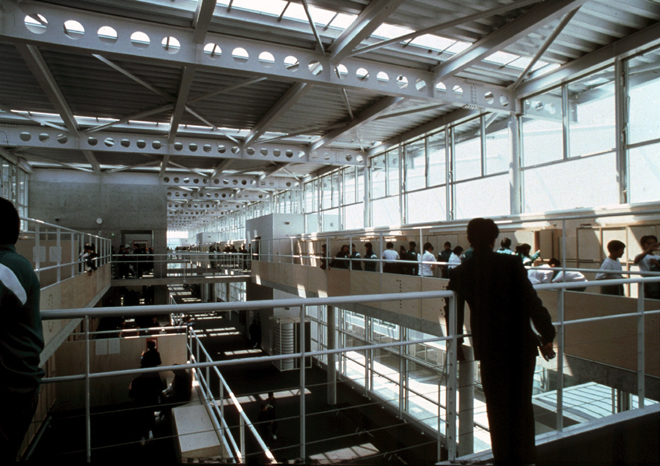
This is a region of severe north winds in winter. The junior high school is even more exposed to north winds than the center of town because it stands on top of a small hill. The enormous, slightly curved wall is meant to protect the school from those strong winds. It is also intended to reflect sunlight and provide light from the north side. Thanks to the wall, considerable light is introduced on the north side even in winter when the sun is low on the horizon. The wall is an environmental device. The wall is referred to as “The Wing of the Wind”.
This is slightly different from most junior high schools. The school has four different curriculums -language, mathematics and science, life, and art- and each curriculum has special rooms such as classrooms, laboratories, audio-visual room and library, research room for teachers and media gallery (information reference room).
We decided to treat the place for students as something entirely separate from the curriculums.
This is slightly different from most junior high schools. The school has four different curriculums -language, mathematics and science, life, and art- and each curriculum has special rooms such as classrooms, laboratories, audio-visual room and library, research room for teachers and media gallery (information reference room).
We decided to treat the place for students as something entirely separate from the curriculums.
Function
Junior High School
architects
Riken Yamamoto & Field Shop
structural eng.
Plus One Structural Des. & Eng. Firm
Site area
201.811 ㎡
Building area
6.757 ㎡
Floor area
10.879 ㎡
Structure
Rainforced concrete
construction
1996.3
Komagane Cultural Park
Komagane Cultural Park
construction
1984.
Kubota House
Kubota House
architects
Riken Yamamoto & Field Shop
Site area
107.22 ㎡
Building area
66.41 ㎡
Floor area
177.26 ㎡
construction
1978.3
Kumagaya Second Cultural Center
Kumagaya Second Cultural Hall
Site area
29320 ㎡
Building area
6494 ㎡
Floor area
10662 ㎡
construction
1994.
Hotakubo Housing
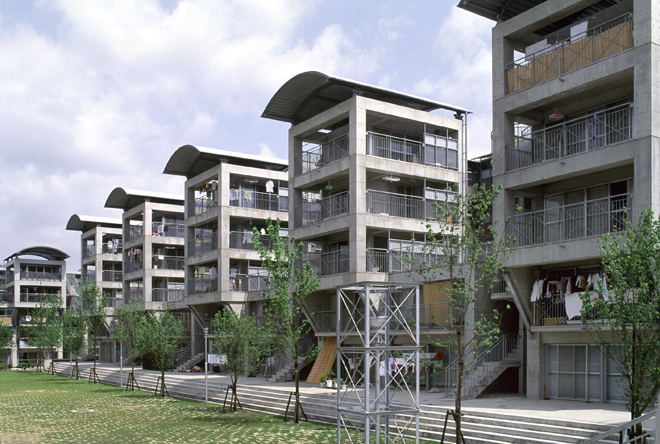
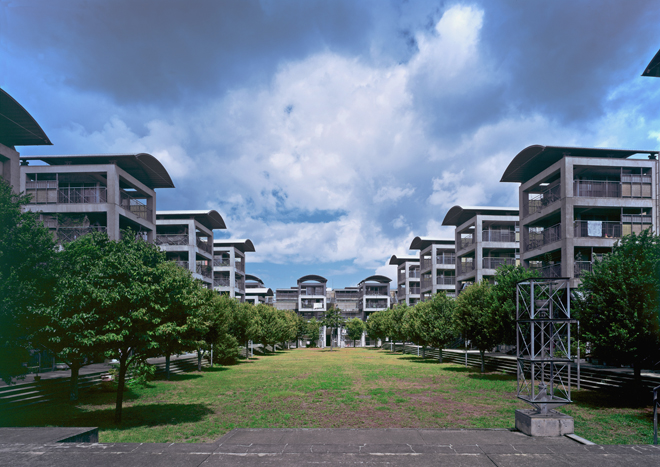
How might these units accommodating 110 entirely different families be conceived as a community? Riken Yamamoto gave that question a great deal of thought. The result was this arrangement of buildings organized around a central space. It was based on the idea of threshold. The open space in the center of the site cannot be accessed except through the units. The units serve as gates to the central open space.
architects
Riken Yamamoto & Field Shop
Site area
11.184 ㎡
Building area
3.562 ㎡
Floor area
8.753 ㎡
Structure
Rainforced concrete
construction
1991.8
Park Rest House
architects
Riken Yamamoto & Field Shop
Site area
1370 ㎡
Building area
1580 ㎡
Floor area
1580 ㎡
construction
2000.11
Future University Hakodate
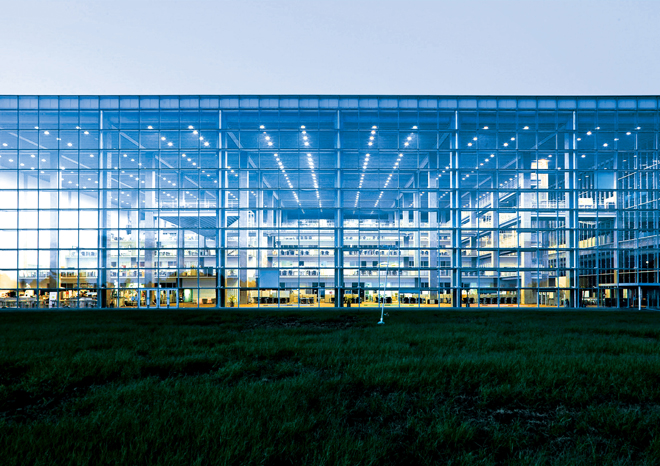
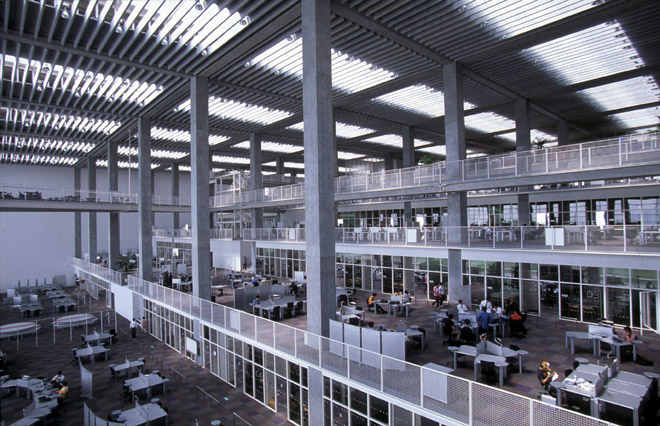

This is a university of information science with two departments: complex systems and media architecture. We proposed a space similar to an architectural office or a studio of a department of architecture at a university, since we found the way that researchers work very similar to the way we design, in that students and researchers of the two departments are substantially working together.
We created a space where various scenes can happen freely, whether solitary deep thinking or teamwork. We named this space the studio. Right besides the studio stand the laboratories of teachers. Through the glass partition between the studio and the laboratories, people can see what is happening on the other side. We believe that the direct relationships among people are especially important as the main work at the university is of computer science.
Open space = Open mind is a catchphrase of the university.
We created a space where various scenes can happen freely, whether solitary deep thinking or teamwork. We named this space the studio. Right besides the studio stand the laboratories of teachers. Through the glass partition between the studio and the laboratories, people can see what is happening on the other side. We believe that the direct relationships among people are especially important as the main work at the university is of computer science.
Open space = Open mind is a catchphrase of the university.
Function
University
architects
Riken Yamamoto & Field Shop, Asia Consulting Engineers JV
structural eng.
Kimura Structural Engineers
structural mech.
Sogo Consultants
Site area
166.403 ㎡
Building area
13.287 ㎡
Floor area
26.839 ㎡
construction
2000.1
other
Acoustic Designers: Nagata Acoustics
Landscape Designers: Asia Consulting Engineers
Landscape Design Collaborators: SANNA
Furniture Designers: Yasuo Kondo Design, Leading Edge Design
Sign Designers: Hiromura Design Office
Textile Designers: Taguchi Design Office
Landscape Designers: Asia Consulting Engineers
Landscape Design Collaborators: SANNA
Furniture Designers: Yasuo Kondo Design, Leading Edge Design
Sign Designers: Hiromura Design Office
Textile Designers: Taguchi Design Office
Future University Hakodate Research Building
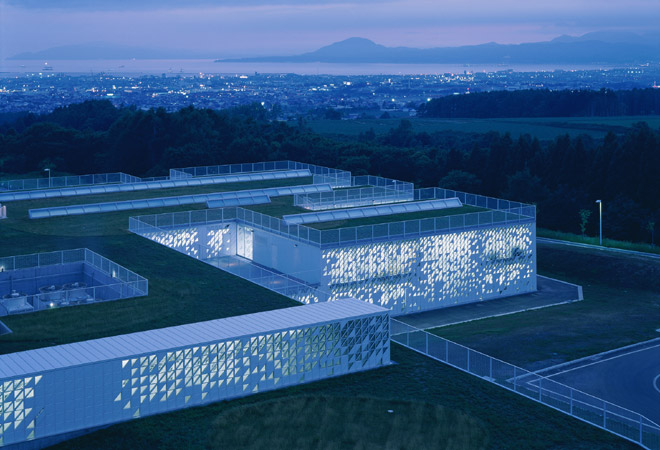
This is an extension of the Future University Hakodate. While all kinds of activity take place in the open flexible atrium in the existing main college, this research building is a collection of small, specialized spaces for research activities. Within the university’s departments for media architecture and department for complex systems, research groups (clusters) are formed across the borders of various research areas; the clusters are re-formed every few years. To adapt to the re-formation of clusters, rooms face each other with a laboratory in between.
The main characteristic of the research building is a ‘lattice wall,’ which is a lozenge truss frame of flat bars set with cast glass or steel panels. The lattice wall is both the structure that supports the whole building and a partition wall system whose proportion of open area can be freely arranged. Each room’s relationship to other rooms can change with its wall. Moreover, the ‘lattice wall’ can be freely equipped with experimental devices or presentation boards, that is, it can function as furniture.
Reporting web page on the construction site
http://www.h7.dion.ne.jp/~nktshr/hakodate/
The main characteristic of the research building is a ‘lattice wall,’ which is a lozenge truss frame of flat bars set with cast glass or steel panels. The lattice wall is both the structure that supports the whole building and a partition wall system whose proportion of open area can be freely arranged. Each room’s relationship to other rooms can change with its wall. Moreover, the ‘lattice wall’ can be freely equipped with experimental devices or presentation boards, that is, it can function as furniture.
Reporting web page on the construction site
http://www.h7.dion.ne.jp/~nktshr/hakodate/
Function
University
architects
Riken Yamamoto & Field Shop
structural eng.
Jun Sato Structural Engineers
structural mech.
Sogo Consultants
Site area
155.023 ㎡
Building area
3.162 ㎡
Floor area
4.383 ㎡
construction
2005.3
Hiroshima Nishi Fire Station
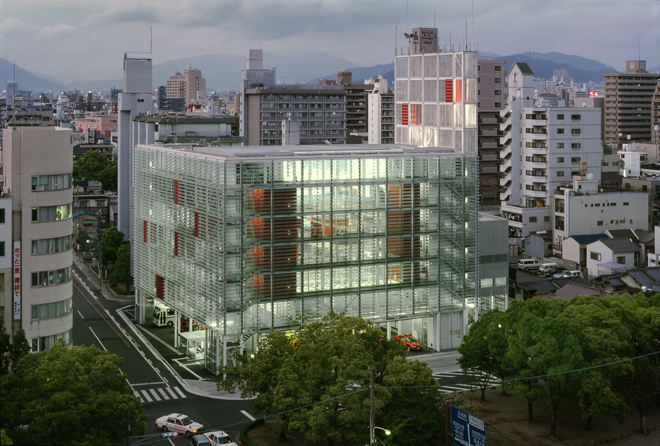
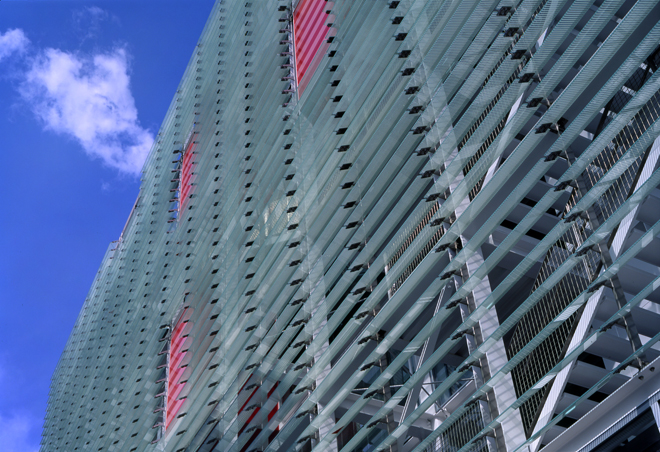
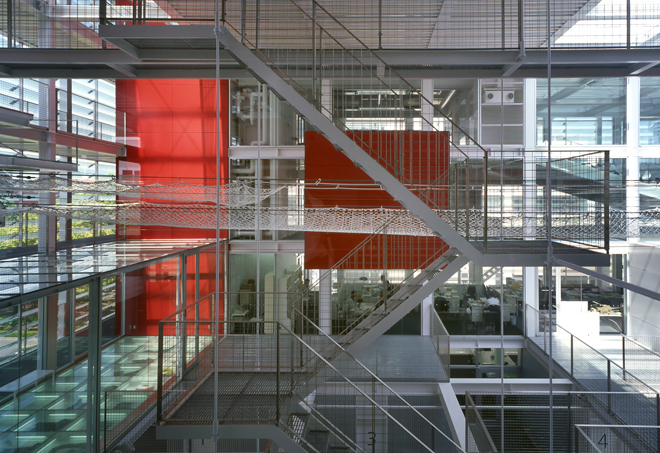
Our consistent image for the fire station was a transparent volume covered with glass louvers, so that people could see various activities from the outside. Each interior facility is located around an atrium where firemen train. The whole building apart from a few special boxes consists of spaces separated with glass.
The exhibition lobby and the visitor terrace on the 4th floor are free space for everyone. These spaces overlook training activities, firemen’s work, lectures at the auditorium (which has a movable floor), practices at the emergency education center and so on. Having seen firemen guiding and explaining their work to local people, we feel deeply that a fire station should shoulder a very important role in shaping a local community.
The exhibition lobby and the visitor terrace on the 4th floor are free space for everyone. These spaces overlook training activities, firemen’s work, lectures at the auditorium (which has a movable floor), practices at the emergency education center and so on. Having seen firemen guiding and explaining their work to local people, we feel deeply that a fire station should shoulder a very important role in shaping a local community.
Function
Fire Station, Education Center
architects
Riken Yamamoto & Field Shop
structural eng.
Plus One Structural Des. & Eng. Firm
structural mech.
Sogo Consultants
Site area
1.712 ㎡
Building area
1.326 ㎡
Floor area
6.245 ㎡
construction
2000.3
other
Fire Safety Designers: Ataka Fire Safety Design Office
Quantity Surveyors: DanQuantity Surveyors Office
Acoustic Designers: Nagata Acoustics
Sign Designers: Hiromura Design Office
Quantity Surveyors: DanQuantity Surveyors Office
Acoustic Designers: Nagata Acoustics
Sign Designers: Hiromura Design Office
Sato House
Sato House
architects
Riken Yamamoto & Field Shop
Site area
445.29 ㎡
Building area
170.28 ㎡
Floor area
216.22 ㎡
construction
1984.1
Sakyu Museum
Sakyu Museum
Okegawa City Hall
(GA Japan46)
Okegawa City Hall
architects
Riken Yamamoto & Field Shop
structural eng.
Plus One Structural Des. & Eng. Firm
Site area
9391.05 ㎡
Floor area
10966 ㎡
construction
1993.
Saitama Prefectural University
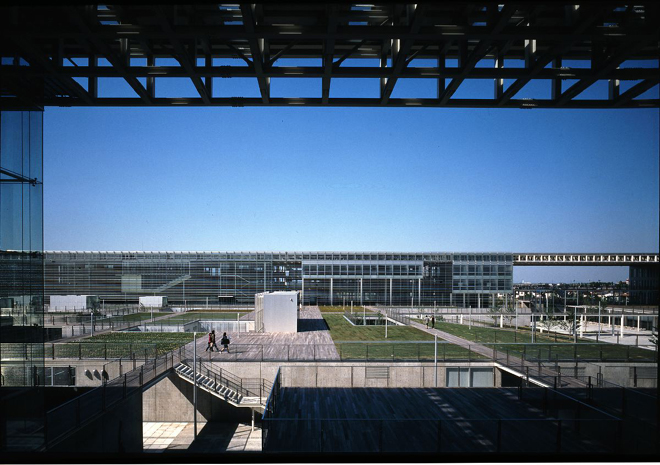
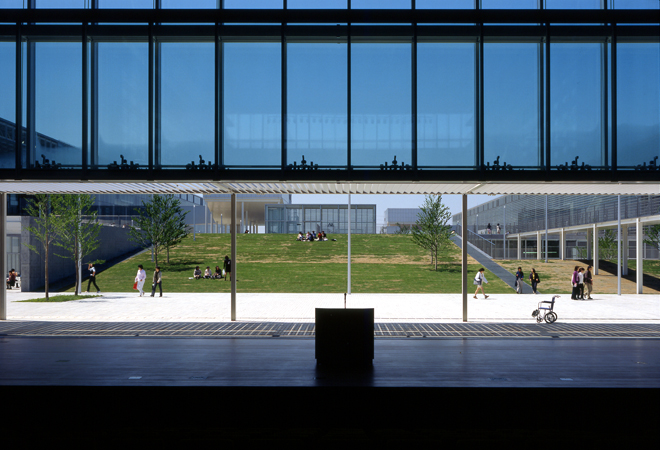
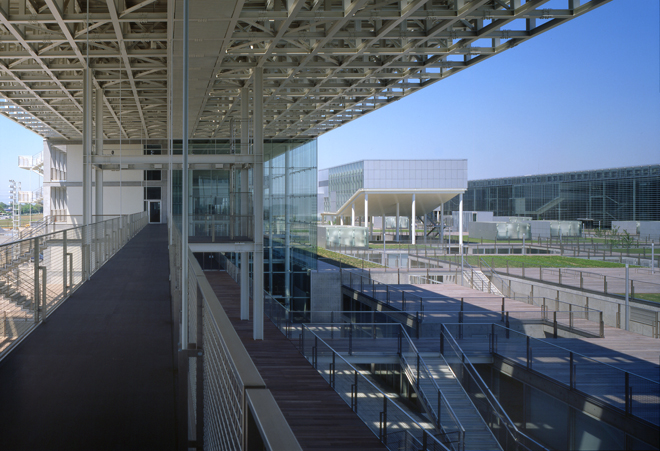
This is a university that specializes in nursing and welfare. The aim of its education is to develop the talent who will take leading roles within local communities, where close mutual cooperation will be essential. To achieve this goal, we conceived an architecture that can traverse the framework of conventional faculties and departments, instead of completing or closing each faculty/department. Therefore we proposed one single volume.
Starting from one volume, the plan had many problems to be solved with regard to each specific area, but our solution makes the correlation of each element of the whole architecture seem as clear and systematic as possible. As a result, the architecture becomes the landscape as if the foundation of a city appears as architecture.
Starting from one volume, the plan had many problems to be solved with regard to each specific area, but our solution makes the correlation of each element of the whole architecture seem as clear and systematic as possible. As a result, the architecture becomes the landscape as if the foundation of a city appears as architecture.
Function
University
architects
Riken Yamamoto & Field Shop
structural eng.
Takumi Orimoto Structural Engineer & Associates,
Plus One Structural Des. & Eng. Firm
Plus One Structural Des. & Eng. Firm
structural mech.
Sogo Consultants
Site area
102.265 ㎡
Building area
34.030 ㎡
Floor area
54.080 ㎡
construction
1999.1
other
Acoustic Designers: Nagata Acoustics
Landscape Designers: Sowa Civil Engineering
Landscape Design Collaborators: SANNA
Furniture Designers: Yasuo Kondo Design, H. Design Associates, Leading Edge Design
Sign Designers: Hiromura Design Office
Color Planning / Textile Designers: Taguchi Design Office
Lighting Design Collaborators: Lighting Planners Associates
Planting Design Collaborators: S.E.D.O (Studio on Site)
Artwork Coordinators: Kotobuki Town Art Co., Ltd
Artwork: Miho Akioka, Charles Ross, Zenji Funabashi, Fong Zhenning, Tatsuo Miyajima, Kikuma Mochizuki
Landscape Designers: Sowa Civil Engineering
Landscape Design Collaborators: SANNA
Furniture Designers: Yasuo Kondo Design, H. Design Associates, Leading Edge Design
Sign Designers: Hiromura Design Office
Color Planning / Textile Designers: Taguchi Design Office
Lighting Design Collaborators: Lighting Planners Associates
Planting Design Collaborators: S.E.D.O (Studio on Site)
Artwork Coordinators: Kotobuki Town Art Co., Ltd
Artwork: Miho Akioka, Charles Ross, Zenji Funabashi, Fong Zhenning, Tatsuo Miyajima, Kikuma Mochizuki
Floor area
1800 ㎡
Mihira House
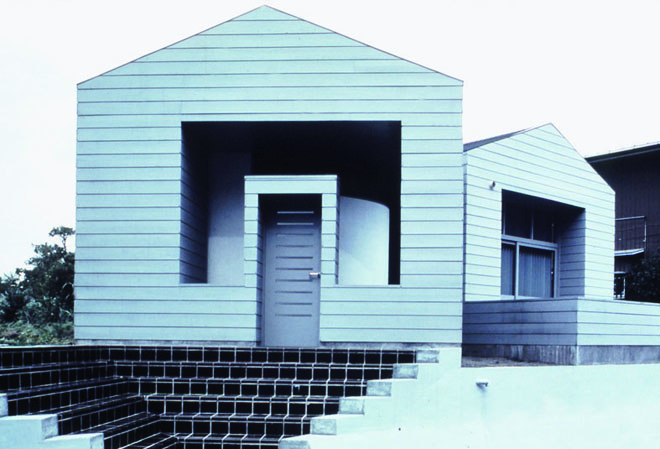
Function
Guest room, Atelier
architects
Riken Yamamoto & Field Shop
Site area
595.66 ㎡
Building area
66.87 ㎡
Floor area
66.87 ㎡
Structure
Wood structure
construction
1976.
Yamakawa Villa
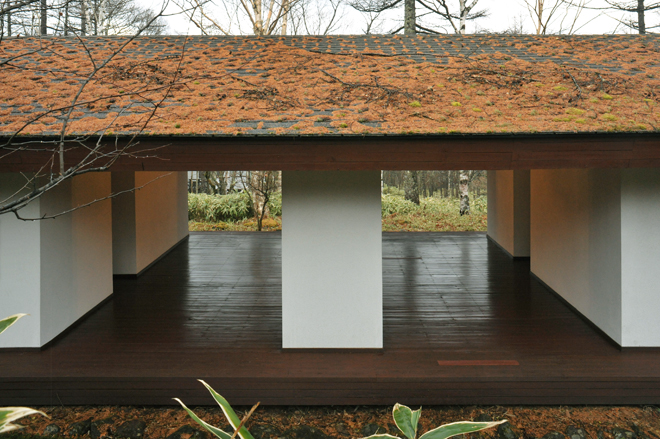
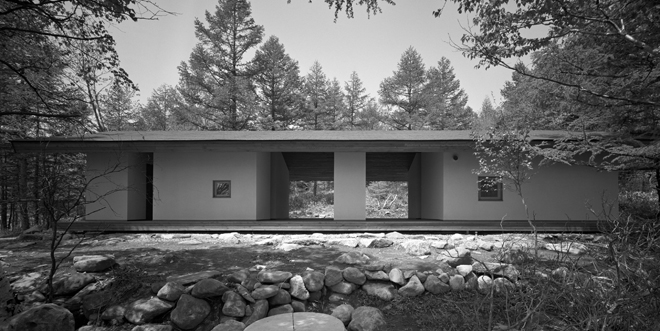
After making a few basic requests, Mr. Yamakawa had very little to say. He wanted a spacious terrace--a place that was like a living room where he could also take his meals and relax the whole day long. The villa would be used mainly as a summer retreat; it would not be used in winter. Those were his only conditions. We therefore designed a house that seemed to be all terrace. We developed several proposals but they were all for a house that seemed to be just a terrace.
What was finally built was perhaps the most reasonable and livable of our proposals. A number of rooms stand, separated from one another, in the middle of the woods, and a single roof covers them all. A gabled roof was the only roof form I could think of at the time. The idea of dispersing the rooms on the deck seemed to me completely new. Small windows in the rooms afford views. We wanted the windows to be as small as possible.
Mr. Yamakawa, who placed his trust in an architect with practically no real experience, was our first client. Looking back, I believe the project greatly influenced my subsequent approach.
What was finally built was perhaps the most reasonable and livable of our proposals. A number of rooms stand, separated from one another, in the middle of the woods, and a single roof covers them all. A gabled roof was the only roof form I could think of at the time. The idea of dispersing the rooms on the deck seemed to me completely new. Small windows in the rooms afford views. We wanted the windows to be as small as possible.
Mr. Yamakawa, who placed his trust in an architect with practically no real experience, was our first client. Looking back, I believe the project greatly influenced my subsequent approach.
Function
Villa
architects
Riken Yamamoto & Field Shop
structural eng.
Kojima Building Construction Firm
Site area
1050 ㎡
Building area
68 ㎡
Floor area
68 ㎡
Structure
Wood structure
construction
1977.1
Yamamoto Mental Clinic
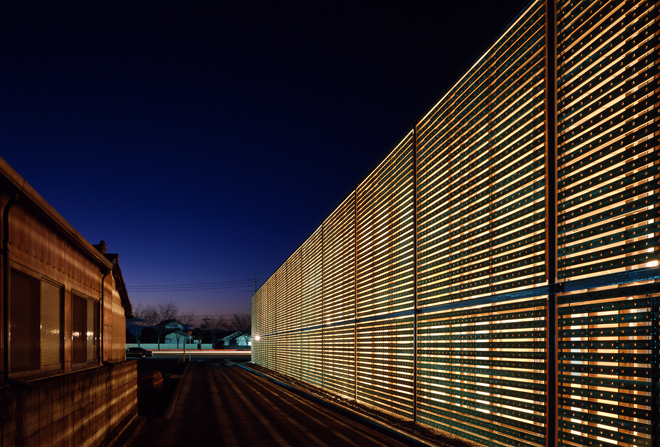
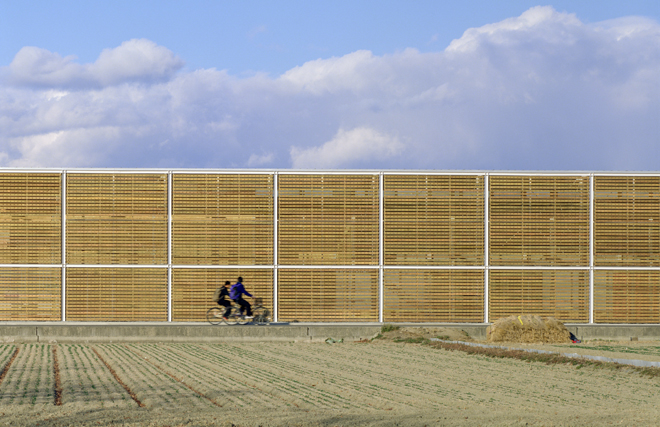
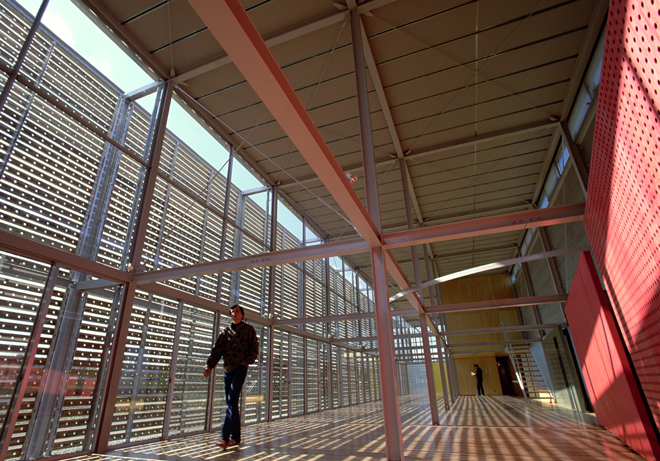
The 54-meter long facade is covered by a screen of cedar panels. The panels, which have been treated with a diameter of 30mm arranged at 130mm intervals punched in them. Each panel measures 4.000mm by 100mm; therefore, the holes account for 5% of the panel area. Those panels in turn are arranged about 30mm apart. As a result, about 35% of the screen is open. Though only 35% of it is open, the screen of cedar panels lets in plenty of light because it faces south.
The sunlight that enters through the 30mm holes and slits is like dappled light falling through trees.
It is a shower of light.
The sunlight that enters through the 30mm holes and slits is like dappled light falling through trees.
It is a shower of light.
Function
Clinic and day-care center
architects
Riken Yamamoto & Field Shop
Site area
733.32 ㎡
Building area
331.8 ㎡
Floor area
394.38 ㎡
construction
1996.1
Yamamoto House
Yamamoto House
architects
Riken Yamamoto & Field Shop
Site area
132 ㎡
Building area
69.3 ㎡
Floor area
107.4 ㎡
construction
1978.
construction
2009.
Wakatsuki House
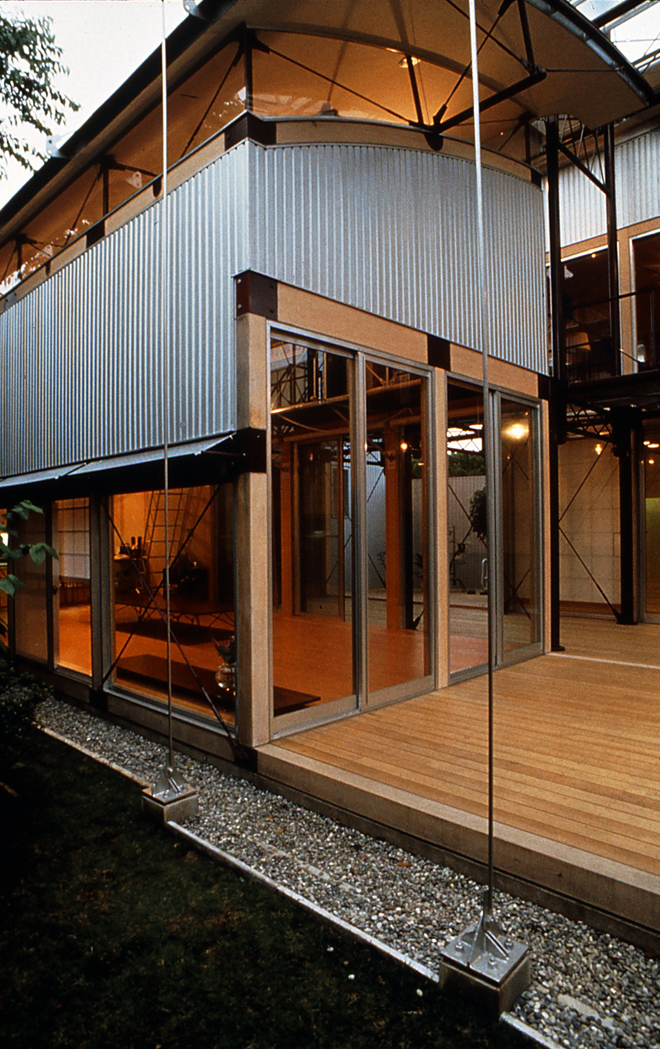
architects
Riken Yamamoto & Field Shop
Site area
190 ㎡
Building area
87 ㎡
Floor area
123 ㎡
construction
1989.5
Omata House
Omata House
architects
Riken Yamamoto & Field Shop
Site area
243.59 ㎡
Building area
98.46 ㎡
Floor area
196.72 ㎡
construction
1985.
Niikura House
Niikura House
architects
Riken Yamamoto & Field Shop
Site area
430.23 ㎡
Building area
185.54 ㎡
Floor area
307.21 ㎡
construction
1983.
Shindo House
Shindo House
architects
Riken Yamamoto & Field Shop
Site area
206.42 ㎡
Building area
76.55 ㎡
Floor area
117.99 ㎡
construction
1977.9
Seno House
Seno House
architects
Riken Yamamoto & Field Shop
Site area
449.86 ㎡
Building area
168.15 ㎡
Floor area
407.17 ㎡
construction
1981.5
STUDIO STEPS
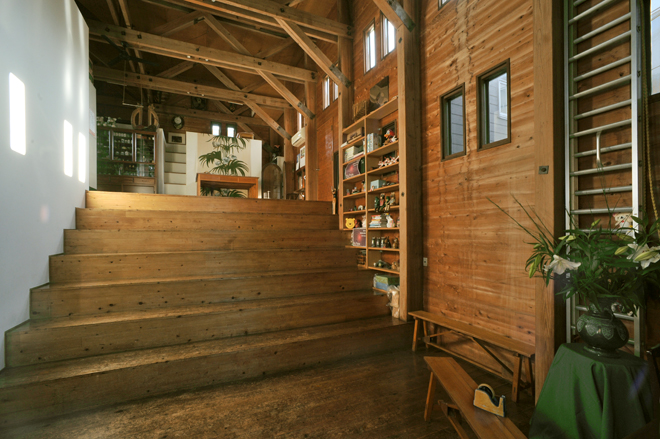
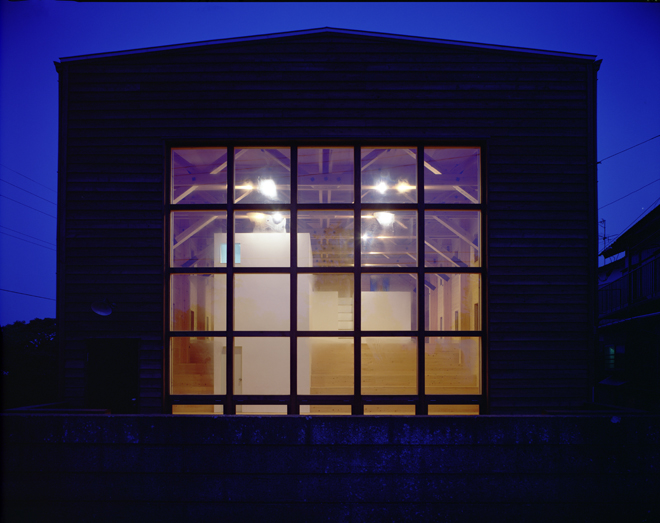
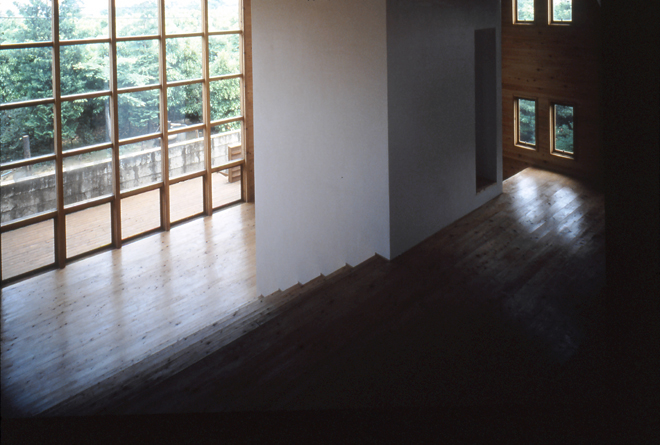
The original clients, Mr. and Mrs. Ishii, he was a sculptor and she was a painter. This was to be used as an atelier. They wanted to invite people over from time to time for concerts. They were acquaintances (or should I call them comrades) from the days of student protests. Though it had not been agreed upon, I wanted to create a house that was at the same time a facility that was useful for outside people. I would create a large space that was as open as possible to the outside world and make that an atelier-like place, or a place where a small concert could be held. The everyday living area would be concealed under that large space and invisible from the outside world. A house always has a place that is open to the outside world.
Mr. and Mrs. Fujii, who received this house from the Ishiis, use this large space as a living room. \"It is spacious and high-ceilinged and quite pleasant. Though it does get a bit cold in winter. We don\
Mr. and Mrs. Fujii, who received this house from the Ishiis, use this large space as a living room. \"It is spacious and high-ceilinged and quite pleasant. Though it does get a bit cold in winter. We don\
Function
Housing
architects
Riken Yamamoto & Field Shop
structural eng.
Kojima Building Construction Firm
Site area
340 ㎡
Building area
96 ㎡
Floor area
143 ㎡
construction
1978.4
Kawasato Hall
Kawasato Hall
construction
1990.
Daiko Dormitory
Daiko Dormitory
architects
Riken Yamamoto & Field Shop
Site area
369.64 ㎡
Building area
152.58 ㎡
Floor area
217.11 ㎡
construction
1987.
Nagaoka Cultural Hall
Nagaoka Culture Hall
construction
1996.
Tianjin Library
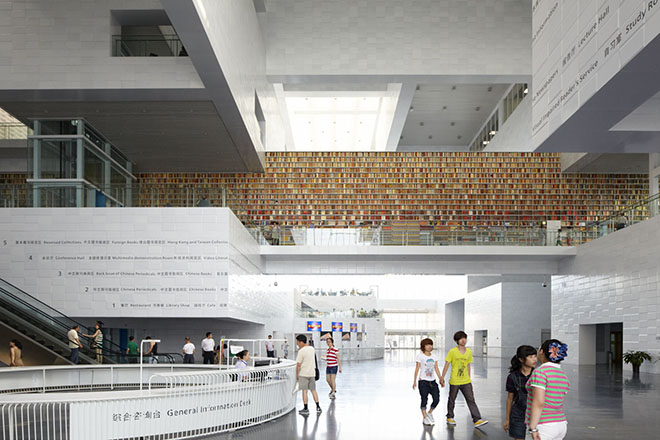
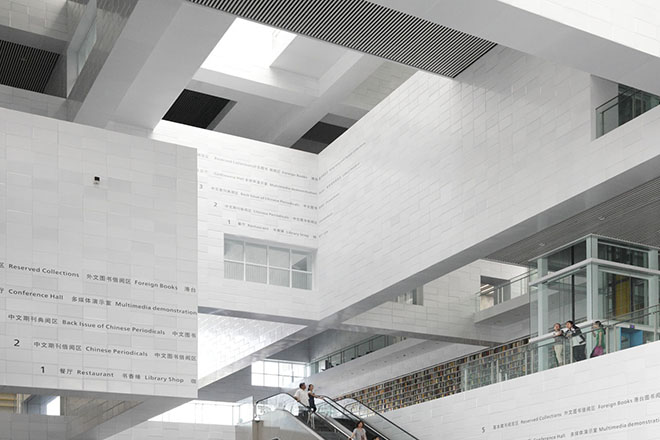
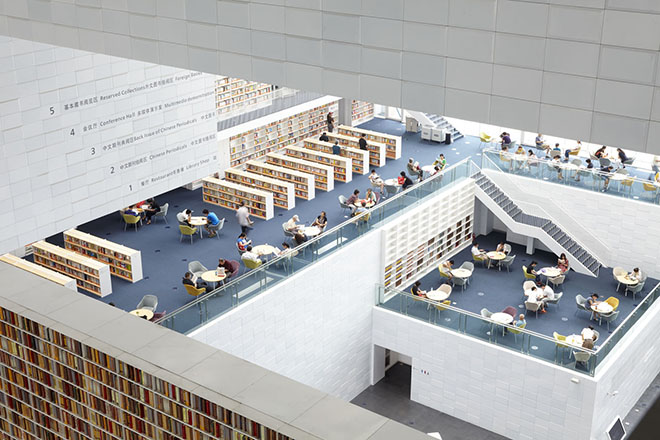
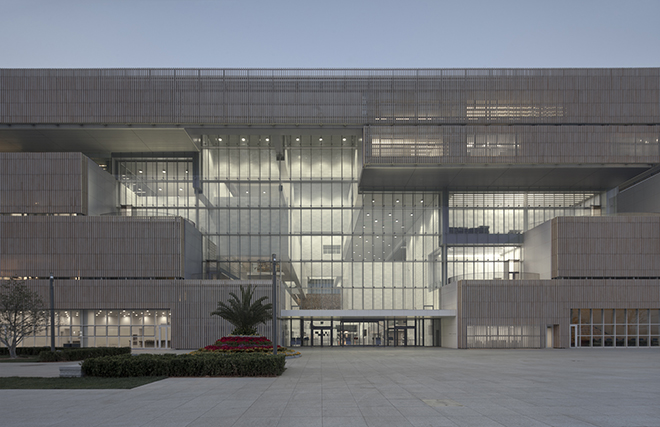
Tianjin Library, located in the cultural district of the city of Tianjin in China, is a library of a size that is inconceivable in Japan; it has a total floor area of 55,000 square meters and 5 million books. The building is composed of wall beams arranged on a 20.4 m x 20.4 m grid. Each layer of wall beams is displaced 10.2 meters from the one directly below it. A mezzanine level is installed between layers, so that this five-layer building appears to have ten crisscrossing layers.
The wall-beam structure, which seems like wall construction at first glance, is actually steel-frame trusses.
An entrance hall that extends all the way through the building from north to south is in the center of the library on the ground floor, making it possible for anyone to access the facility. Wall beams cross the space overhead. Bookshelves are incorporated into the wall beams; the multi-level space provides a clear view of the bookshelves on each floor. The entire library is a space enclosed by bookshelves. The intersecting walls create both a large, open space and smaller, articulated spaces. Effort was made to create reading spaces that are as diverse as possible, precisely because the library is so large in size. Visitors can experience a wide variety of places as they wander through the library.
The wall-beam structure, which seems like wall construction at first glance, is actually steel-frame trusses.
An entrance hall that extends all the way through the building from north to south is in the center of the library on the ground floor, making it possible for anyone to access the facility. Wall beams cross the space overhead. Bookshelves are incorporated into the wall beams; the multi-level space provides a clear view of the bookshelves on each floor. The entire library is a space enclosed by bookshelves. The intersecting walls create both a large, open space and smaller, articulated spaces. Effort was made to create reading spaces that are as diverse as possible, precisely because the library is so large in size. Visitors can experience a wide variety of places as they wander through the library.
Function
Library
Site area
37.800 ㎡
Building area
13.700 ㎡
Floor area
58.154 ㎡
Structure
Steel structure
construction
2012.5
Shinonome Canal Court CODAN
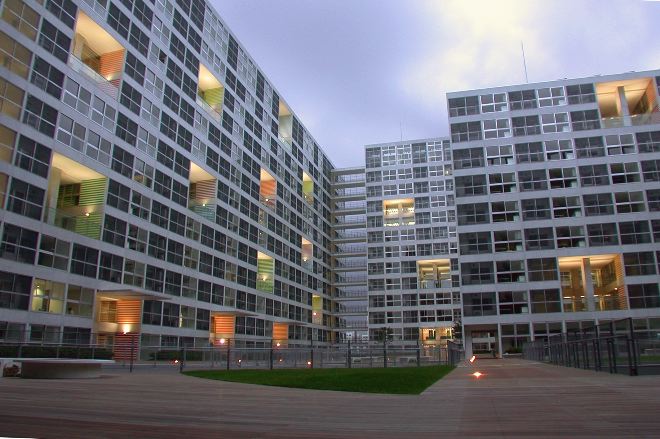
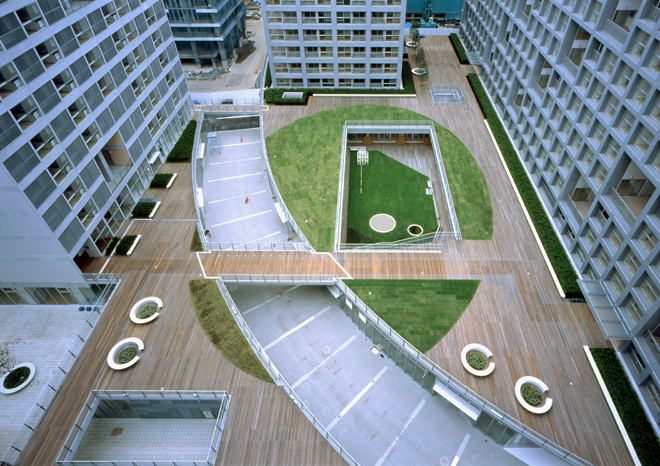
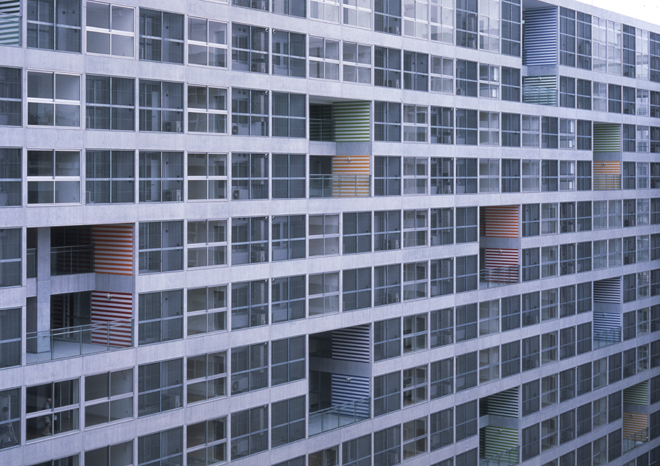
The main characteristics of this housing development are the ‘common terrace’ which is a volume carved out of the residential building, the ‘foyer-room’ which can be used as a home office, sunny center corridors, and sunny bathrooms/kitchens.
Placed randomly on each floor, a common terrace of double height is surrounded with foyer-rooms. Connected to common terraces, people can use these foyer-rooms as SOHO, nursery space, or hobby rooms. Each common terrace is surrounded by the ‘foyer rooms’ of eight housing units. One fourth of the units face the common terraces.
The other units are separated from the center corridors with glass partitions. Because of the terraces that occur at intervals throughout the project, these center corridors have the light and air circulation of exterior space. Placing the foyer rooms by the center corridors can make residential rooms open toward the corridor. To allow for large, square foyer rooms, bathrooms and kitchens are by the outer wall. This is a blend of homes and workplaces rather than homes next to workplaces. We tried to enlarge the potential of collective housing, putting the function of office into a housing.
Placed randomly on each floor, a common terrace of double height is surrounded with foyer-rooms. Connected to common terraces, people can use these foyer-rooms as SOHO, nursery space, or hobby rooms. Each common terrace is surrounded by the ‘foyer rooms’ of eight housing units. One fourth of the units face the common terraces.
The other units are separated from the center corridors with glass partitions. Because of the terraces that occur at intervals throughout the project, these center corridors have the light and air circulation of exterior space. Placing the foyer rooms by the center corridors can make residential rooms open toward the corridor. To allow for large, square foyer rooms, bathrooms and kitchens are by the outer wall. This is a blend of homes and workplaces rather than homes next to workplaces. We tried to enlarge the potential of collective housing, putting the function of office into a housing.
Function
Multiple Dwelling
architects
Riken Yamamoto & Field Shop
structural eng.
Takumi Orimoto Structural
structural mech.
Environment Equipment
Site area
9.221 ㎡
Building area
5.966 ㎡
Floor area
49.687 ㎡
construction
2003.
other
Basic Planning: Urban Development Corporation, Tokyo Branch
Tokyo Weld Technical Center
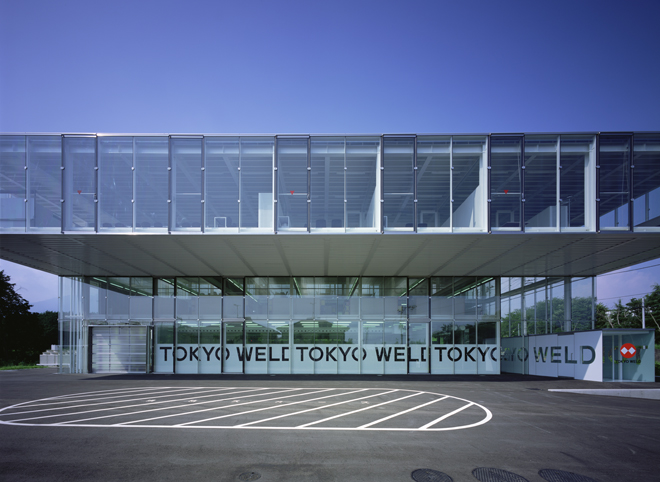
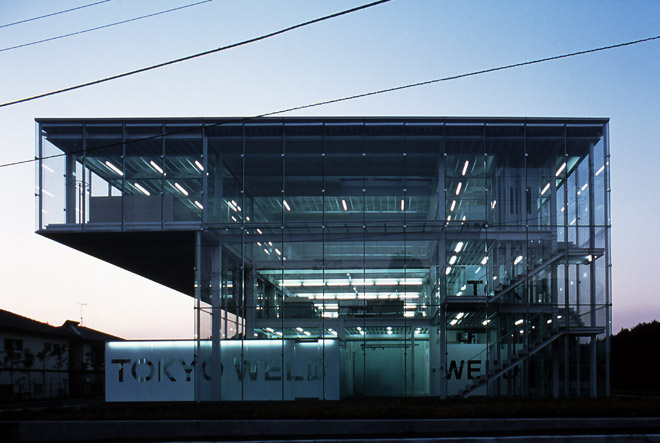
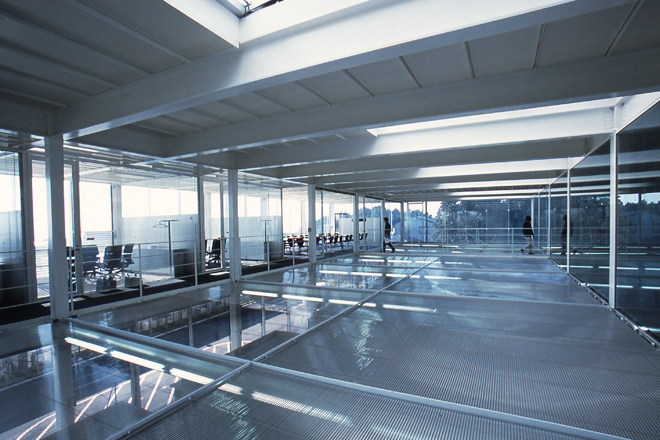
Tokyo Weld is a company making automated machines that embed semiconductor chips in things such as mobile phones and computers. This is its research center, a place for technical development, making presentations to clients, and training new employees. We glazed it because it is in an excellent environment, surrounded by tea fields. The multilevel space is the research room. The reception and presentation rooms are arranged around this space.
Products can be loaded directly onto trucks from the laboratory work room on the first floor. The third floor juts out to enable trucks with gull-wing doors to pack underneath it. The third floor affords a view of Mt. Fuji and Suruga Bay.
Products can be loaded directly onto trucks from the laboratory work room on the first floor. The third floor juts out to enable trucks with gull-wing doors to pack underneath it. The third floor affords a view of Mt. Fuji and Suruga Bay.
architects
Riken Yamamoto & Field Shop
Site area
1.945 ㎡
Building area
639 ㎡
Floor area
1.279 ㎡
construction
2001.5
Fujii House
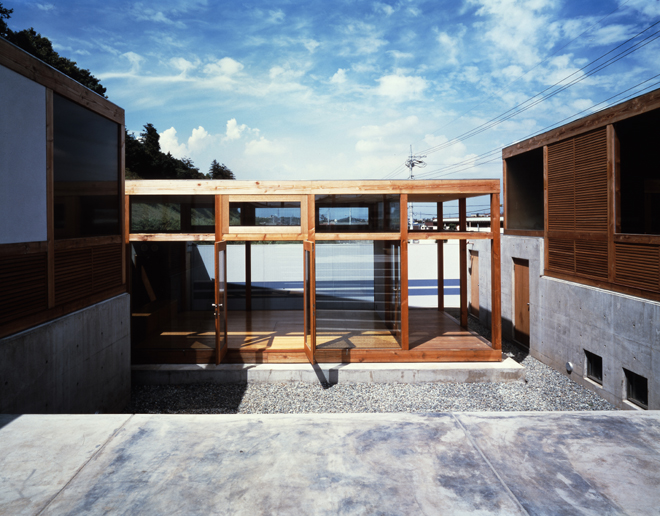
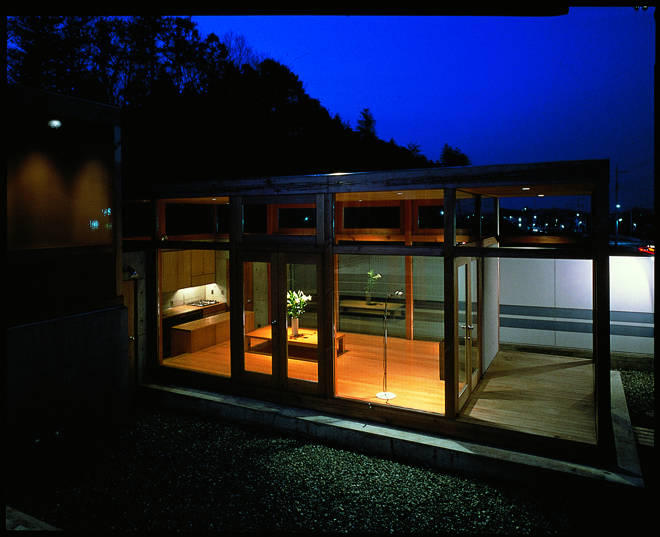
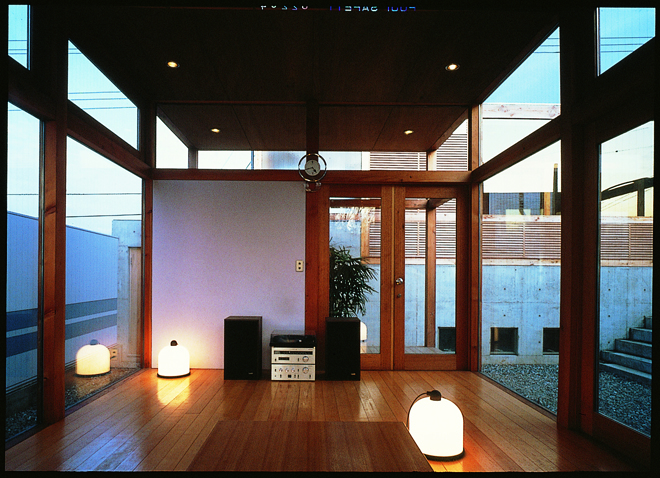
The first floor is a dental clinic, and the residential quarters are on the second floor. A lightweight wooden construction frame stands atop the podium-like reinforced-concrete structure on the first floor. I wanted to make the reinforced concrete as heavy as possible and the wooden frame as simple as possible. This is a building made of just columns and beams.
The family room in the center of the courtyard is glazed virtually on all four sides. The glass is inserted simply and directly into the structural columns and beams without any window-frame. This was to make it look like a simple building made of just columns and beams. It is without window-frames because I wanted the building to be as integrated as possible with the outside. Modern architecture, particularly houses, are equipped with a great deal of heat insulation and sufficient mechanical systems to minimize influence by the outside world. I wanted to create a house that was, in the manner of many primitive houses in the days before modernization, in contact with the outside world as much as possible. The entire courtyard is a place like a living room.
The family room in the center of the courtyard is glazed virtually on all four sides. The glass is inserted simply and directly into the structural columns and beams without any window-frame. This was to make it look like a simple building made of just columns and beams. It is without window-frames because I wanted the building to be as integrated as possible with the outside. Modern architecture, particularly houses, are equipped with a great deal of heat insulation and sufficient mechanical systems to minimize influence by the outside world. I wanted to create a house that was, in the manner of many primitive houses in the days before modernization, in contact with the outside world as much as possible. The entire courtyard is a place like a living room.
Function
Clinic, Housing
architects
Riken Yamamoto & Field Shop
Site area
351 ㎡
Building area
161 ㎡
Floor area
216 ㎡
Structure
Rainforced concrete
construction
1982.6
Japan Cultural Hall, Paris
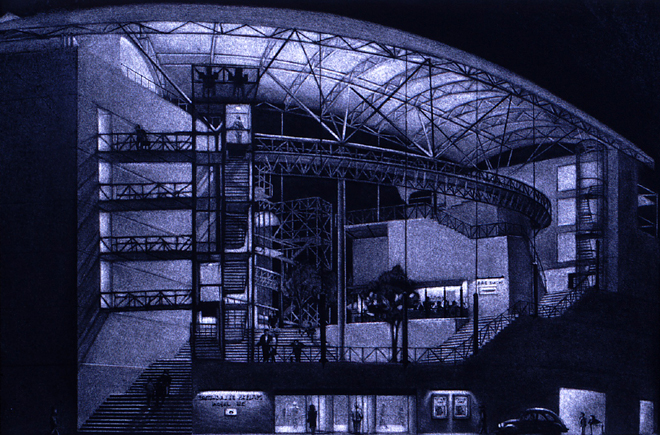
Japan Cultural Hall, Paris
construction
1990.
Tianjin Housing Project
A 300 individual- and multi-unit housing development with recreational (pool, gym and so on) and commercial facilities is planned on a 23-hectare site in Tang Gu ward, Tianjin city, China. We are working together with Motomu Uno, Kazuhiro Kojima, Yoshiharu Tsukamoto and Ryue Nishizawa. The five architects have proposed site layouts that gently influence the whole, while maintaining a sense of cohesion. The terrain of the site and its surroundings was flat; therefore we introduced gentle undulations to the overall site. An area called \
Function
private residence, club, office, shop
architects
Riken Yamamoto & Field Shop, Atlier Bow - Wow + T.I.T Tsukamoto Lab., Motomu Uno / Phase Associates, C+A, Office of Ryue Nishizawa
structural eng.
Plus One Structural Des. & Eng. Firm
structural mech.
Toshusai Technical
Floor area
110000 ㎡
Structure
RC
construction
2005.
other
andscape designers: Sowa Civil Engineering
sign designers: Hiromura Design Office
sign designers: Hiromura Design Office
Fussa City Hall
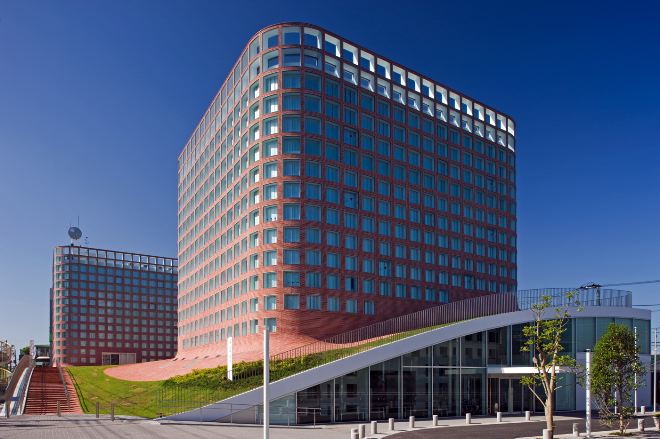
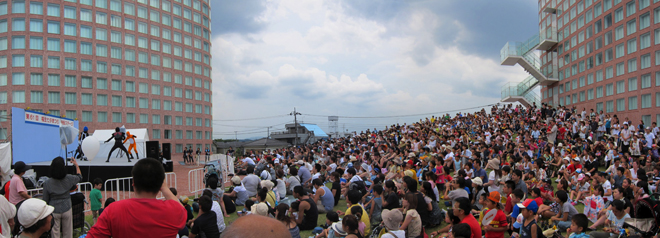
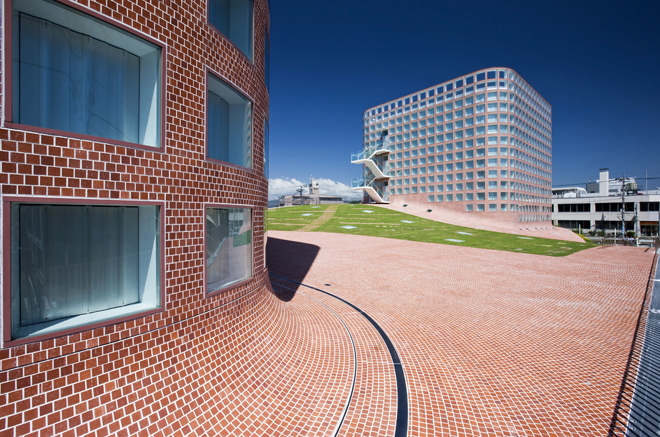
Fussa City Hall is located about 50 km away from Tokyo city center in a dense residential area.
The landscape conforms to the local topography: low hills stepping up from the banks of the Tama River.
The lower levels of the city hall called as “Forum”, are the ones open to the public and used by the citizens. They are placed under an undulated organic roof, from where two twin towers rise. The roof itself is a green public space for citizens daily life as well as a place for various events and activities. The greenery on the roof makes the building more energy efficient reducing energy losses and helping to integrate it into the surrounding environment.
The two towers containing the main offices, provide the city hall with a strong iconic image. In order to provide the offices with a maximum of space quality, the main idea is to place the structure of the building on the exterior façade avoiding structure elements in the working space. The pillars and beams of the outer skin structure become thinner on the upper parts of the tower, helping the building to look light and soft towards the sky. The factory-made, pre-cast concrete is used for the slab and outer skin structure. Pre-cast concrete is a high-performance material, it is earthquake resistant and suits the speedy constructions. Using this construction system the government offices and assembly functions needed in the city hall have no limitations and the distribution of the interior is free and flexible according to the users preferences.
The landscape conforms to the local topography: low hills stepping up from the banks of the Tama River.
The lower levels of the city hall called as “Forum”, are the ones open to the public and used by the citizens. They are placed under an undulated organic roof, from where two twin towers rise. The roof itself is a green public space for citizens daily life as well as a place for various events and activities. The greenery on the roof makes the building more energy efficient reducing energy losses and helping to integrate it into the surrounding environment.
The two towers containing the main offices, provide the city hall with a strong iconic image. In order to provide the offices with a maximum of space quality, the main idea is to place the structure of the building on the exterior façade avoiding structure elements in the working space. The pillars and beams of the outer skin structure become thinner on the upper parts of the tower, helping the building to look light and soft towards the sky. The factory-made, pre-cast concrete is used for the slab and outer skin structure. Pre-cast concrete is a high-performance material, it is earthquake resistant and suits the speedy constructions. Using this construction system the government offices and assembly functions needed in the city hall have no limitations and the distribution of the interior is free and flexible according to the users preferences.
Function
City Hall
architects
Riken Yamamoto & Field Shop
structural eng.
Structural Design Office Plus One Co., Ltd
Jun Sato Structural Design Office
Jun Sato Structural Design Office
structural mech.
Kankyo Engineering Corporation
Site area
4.757 ㎡
Building area
3.200 ㎡
Floor area
10.228 ㎡
Structure
RC+PCa+SRC
construction
2008.3
Jian Wai SOHO
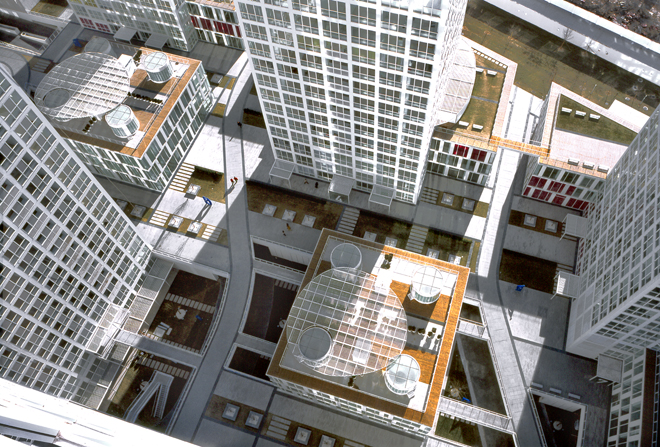
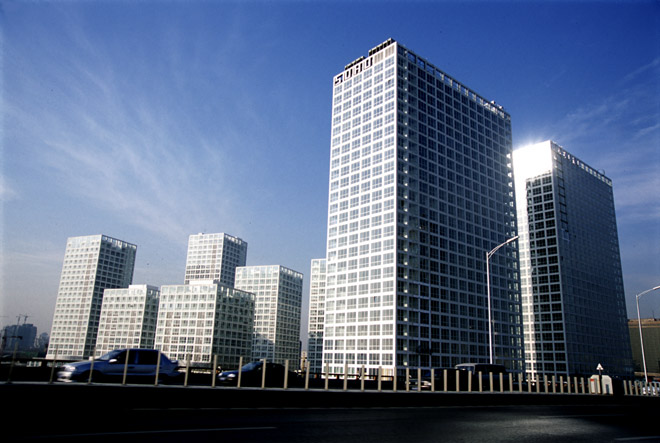
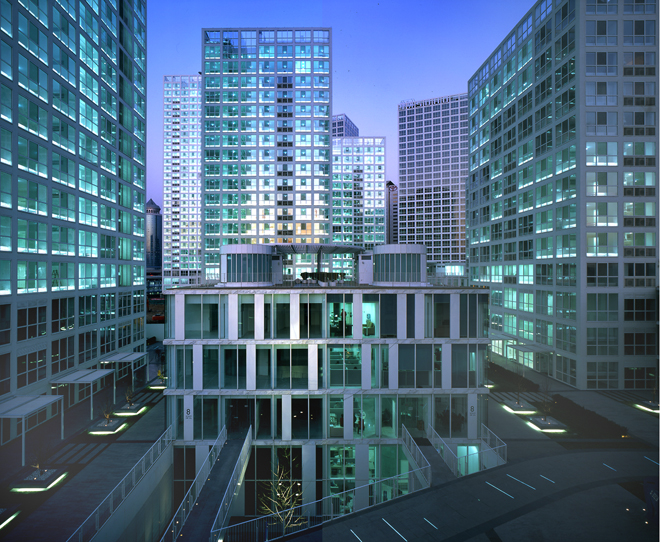
This project combining collective housing and commercial facilities is located in an office development district about two kilometers east of Tianamen Square, the center of Beijing.
Commercial facilities occupy the three bottom floors, and the upper levels are condominiums. In most projects of this sort, commercial facilities are arranged at or near street level, and other places are set aside for the exclusive use of residents. In this way, the arrangement would be quite exclusionary, but that is not suitable for this district in the middle of Beijing. In the SOHO, there are many places to which outside people have free access. The spaces created between buildings are like public streets that allow outside people to enter them. The cars and pedestrians are also separated; vehicular traffic is all on the basement level. This leaves the street-like spaces on the first floor completely free for pedestrians. Commercial facilities such as restaurants and shops and small squares face these streets. The result is a new street- and square-like space that not only the inhabitants of the building, but also the people of Beijing, can enjoy in safety.
We aimed for a thoroughly abstract form of architectural expression. We hoped that these buildings would be given character, not by postmodern design, which was then in fashion in Beijing, but by people activities on the basement level and the first floor and in various other places.
Commercial facilities occupy the three bottom floors, and the upper levels are condominiums. In most projects of this sort, commercial facilities are arranged at or near street level, and other places are set aside for the exclusive use of residents. In this way, the arrangement would be quite exclusionary, but that is not suitable for this district in the middle of Beijing. In the SOHO, there are many places to which outside people have free access. The spaces created between buildings are like public streets that allow outside people to enter them. The cars and pedestrians are also separated; vehicular traffic is all on the basement level. This leaves the street-like spaces on the first floor completely free for pedestrians. Commercial facilities such as restaurants and shops and small squares face these streets. The result is a new street- and square-like space that not only the inhabitants of the building, but also the people of Beijing, can enjoy in safety.
We aimed for a thoroughly abstract form of architectural expression. We hoped that these buildings would be given character, not by postmodern design, which was then in fashion in Beijing, but by people activities on the basement level and the first floor and in various other places.
Function
Multiple Dwelling, Shop, Office, Sport Club, School
architects
Riken Yamamoto & Field Shop, C+A, MIKAN, Beijing New Era Architectural Design, Beijing Dongfang Huatai Architectural & Engineering
structural eng.
Plus One Structural Des. & Eng. Firm
structural mech.
Kankyo Engineering
Site area
122.775 ㎡
Building area
34.823 ㎡
Floor area
703.069 ㎡
Structure
Reinforced Concrete, Partly Steel Frame
construction
2004.
other
Interior and Furniture Designers: Yasuo Kondo Design
Sign Designers: Hiromura Design Office
Sign Designers: Hiromura Design Office
Office Kitano
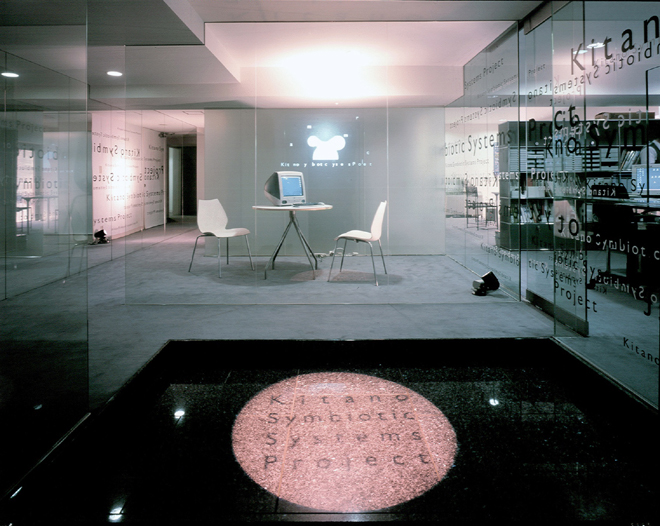
Office Kitano
construction
1998.
Nago City Hall
Nago City Hall
architects
Riken Yamamoto & Field Shop
construction
1978.
Ora Townhall
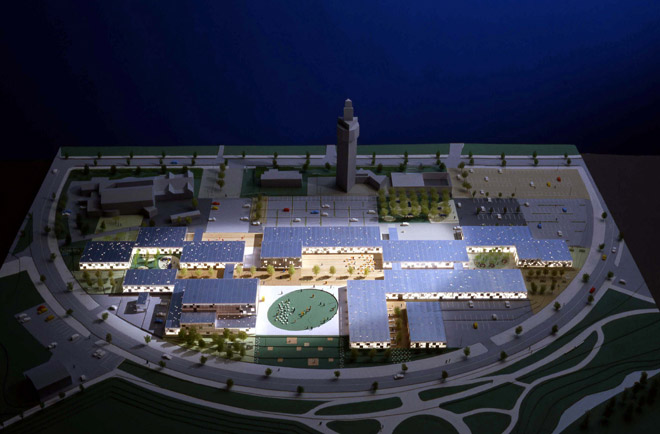
An architectural proposal should be based on a system which allows the various opinions of its users, but gathering opinions and encouraging the participation of residents are meaningless if an architecture ends up being ordinary. Therefore, in the Ora project, we tried to first of all propose a system of architecture that would be a common language between us and the end-users. The system is steel units strapped together with metal packing bands. Strapping takes only 30 seconds. It makes us realize how cumbersome welding was. The whole building consists of the same system, so it can be easily subdivided and rearranged in the future. A perfect system alone, however, is not really interesting in itself. Sharing an unconventional space with the residents of Ora town, thinking about and enjoying the space are the real pleasures when we create architecture together. Town hall design department http://www.town.ora.gunma.jp/gateway/chousha/index.html
Ora Town Hall
Function
town hall, multi-purpose space
architects
Riken Yamamoto & Field Shop
structural eng.
Ove Arup & Partners Japan
structural mech.
Ove Arup & Partners Japan
Site area
22900 ㎡
Floor area
10300 ㎡
construction
2005.
Inter-Junction City AMNIS
Inter-Junction City AMNIS
architects
Riken Yamamoto & Field Shop
structural eng.
Plus One Structural Des. & Eng. Firm
Site area
587.4 ㎡
Building area
464.7 ㎡
Floor area
1332.4 ㎡
construction
1993.
Inter-Junction City ARCUS
This project attemps to make an urban condition that arises out of the relation between buildings. The method here is diametrically opposed to that aproach to planning that commences with an overall master-plan, and then places restrictions on individual buildings in accordance to this plan. Here individual buildings take precedence over the total plan. Or rather, each individual building is already regarded as urban in itself, such that the overall plan is included within conception of each building.
In other words, when individual buildings are to be linked together, the significant factors to this combination are input into each building. Specifically, while it is possible to make any building, for one building to connect to another it is necessary to organize the circulation paths properly. This is why this project is called Inter-Junction City.
In other words, when individual buildings are to be linked together, the significant factors to this combination are input into each building. Specifically, while it is possible to make any building, for one building to connect to another it is necessary to organize the circulation paths properly. This is why this project is called Inter-Junction City.
Inter-Junction City ARCUS
Function
Store Office
architects
Riken Yamamoto & Field Shop
structural eng.
Plus One Structural Des. & Eng. Firm
Site area
1200.1 ㎡
Building area
917.1 ㎡
Floor area
2978.6 ㎡
construction
1993.
Inter-Junction City CÕTE á CÕTE
Inter-Junction City CÕTE á CÕTE
architects
Riken Yamamoto & Field Shop
structural eng.
Plus One Structural Des. & Eng. Firm
Site area
1941.4 ㎡
Building area
1075.68 ㎡
Floor area
4200.62 ㎡
construction
1994.
Inter-Junction City G.F building
Inter-Junction City G.F building
architects
Riken Yamamoto & Field Shop
structural eng.
Plus One Structural Des. & Eng. Firm
Site area
286.4 ㎡
Building area
231 ㎡
Floor area
807.13 ㎡
construction
1992.
Inter-Junction City LOGGIA
Inter-Junction City LOGGIA
architects
Riken Yamamoto & Field Shop
structural eng.
Plus One Structural Des. & Eng. Firm
Site area
331.02 ㎡
Building area
252.54 ㎡
Floor area
887.73 ㎡
construction
1993.
Inter-Junction City OBERISK
Inter-Junction City OBERISK
architects
Riken Yamamoto & Field Shop
Site area
844.29 ㎡
Building area
670.61 ㎡
Floor area
2518.42 ㎡
construction
1993.
Inter-Junction City PRADO
Inter-Junction City PRADO
architects
Riken Yamamoto & Field Shop
structural eng.
Plus One Structural Des. & Eng. Firm
Site area
627.6 ㎡
Building area
521.64 ㎡
Floor area
1481.6 ㎡
construction
1993.11
Inter-Junction City XYSTUS
Inter-Junction City XISTAS
architects
Riken Yamamoto & Field Shop
Site area
1011.2 ㎡
Building area
806.73 ㎡
Floor area
2686.42 ㎡
construction
1992.3
Wakayama City College
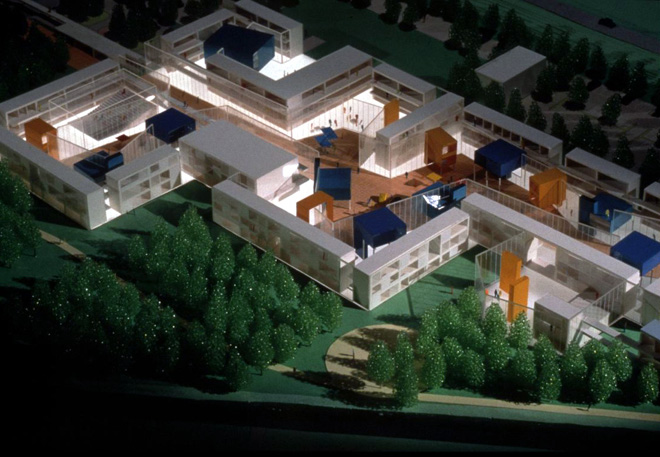
Wakayama City College
architects
Riken Yamamoto & Field Shop
structural eng.
Plus One Structural Des. & Eng. Firm
Site area
約100,000 ㎡
Building area
約 11,500 ㎡
Floor area
約 21,000 ㎡
construction
2000.
Taipei Performing Arts Center
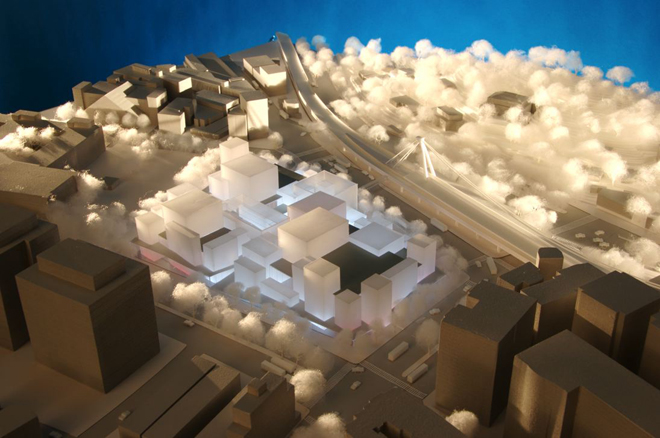
Taipei Performing Arts Center International Competition-Design Proposal
construction
2008.
Seoul Gangnam Housing
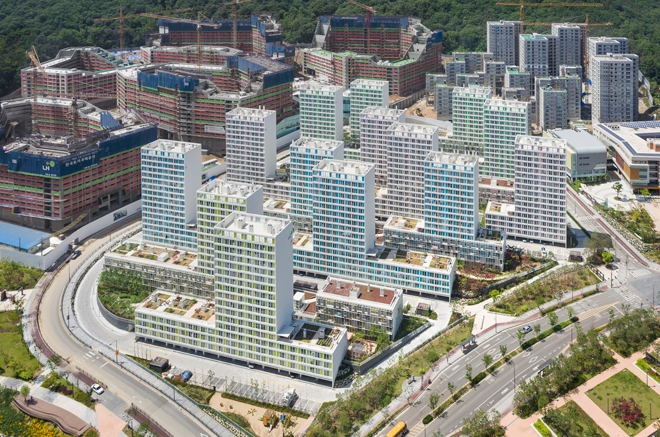
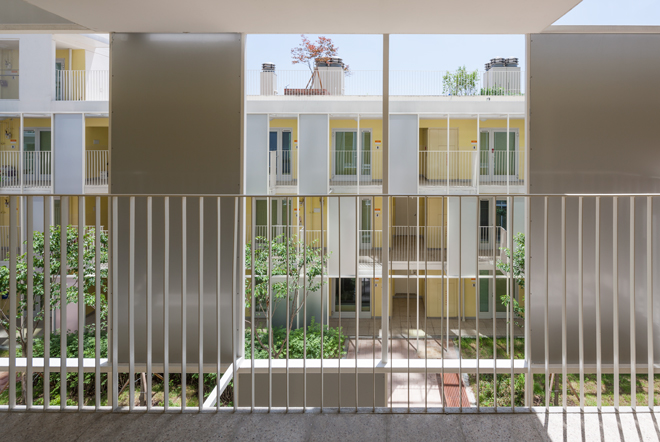
This is a housing project for low-income people in the Gangnam district in the south part of Seoul, Korea.
As the population of urban areas in Korea rose rapidly in the 1970s, housing designed for standard families were provided as in Japan. However, a declining birthrate and the aging of the population have led to a rapid decrease in the size of households and a rapid increase in the number of seniors living by themselves, either alone or as a couple. A quarter of the population is expected to be seniors by 2030, the conventional one house = one family system will no longer work under such circumstances. We proposed a housing prototype for the 21st century that preserves individual privacy yet coexists with the local community.
We propose making housing multifunctional in character. Housing will no longer be simply a place where the family lives and raises children. A new system can be created by opening up housing to the local community through diverse activities, so that even people living by themselves do not remain insolated.
As the population of urban areas in Korea rose rapidly in the 1970s, housing designed for standard families were provided as in Japan. However, a declining birthrate and the aging of the population have led to a rapid decrease in the size of households and a rapid increase in the number of seniors living by themselves, either alone or as a couple. A quarter of the population is expected to be seniors by 2030, the conventional one house = one family system will no longer work under such circumstances. We proposed a housing prototype for the 21st century that preserves individual privacy yet coexists with the local community.
We propose making housing multifunctional in character. Housing will no longer be simply a place where the family lives and raises children. A new system can be created by opening up housing to the local community through diverse activities, so that even people living by themselves do not remain insolated.
Function
Multiple Dwelling
Site area
34.400 ㎡
Building area
10.300 ㎡
Floor area
60.000 ㎡
Structure
RC
construction
2014.
Koyasu Elementary School
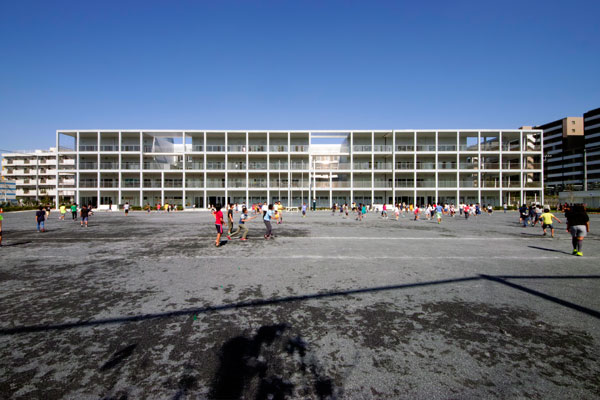
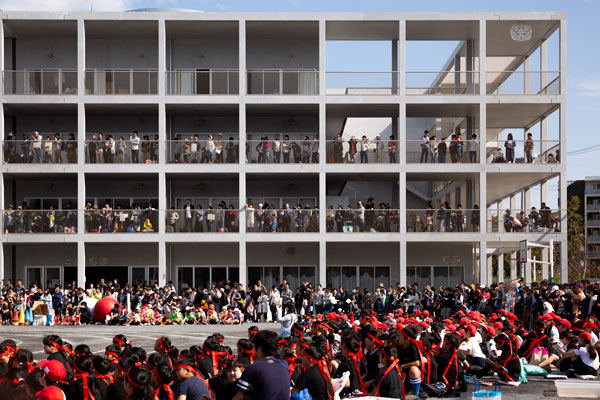
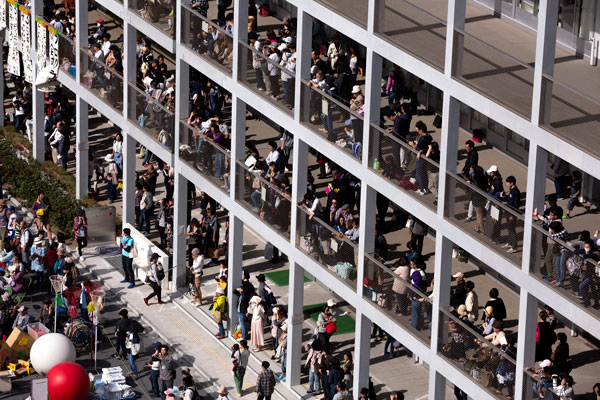
Function
Elementary School
architects
Riken Yamamoto & Field Shop
structural eng.
Structure Plan Plus One
structural mech.
Comprehensive facility planning
Site area
15,090 ㎡
Building area
6,097 ㎡
Floor area
15,562 ㎡
Structure
4 Floors above ground
construction
2018.9
Flower Room
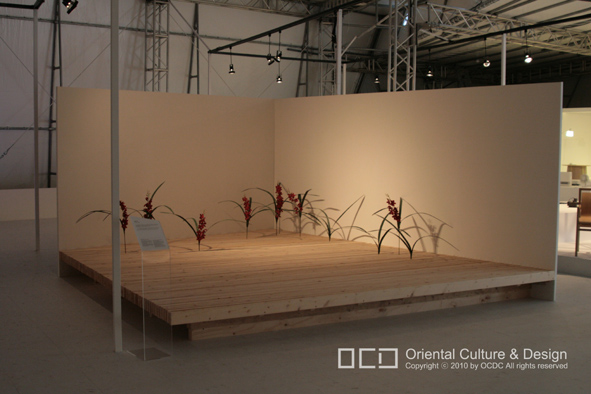
Seoul Design Fair 2010
"Communication Space at Home"
"Communication Space at Home"
construction
2010.9
House in Kamakura
It is not that we are irresponsibly promoting one-room type residences. One-room type residences in wich the inhabitant decides the style of living are, at the end of the day, only cristalizations of the memories of the inhabitant. If possible, I would like to create these so that the inhabitant can value such thoughts and memories to the maximun possible extent. Various rooms are used various ways.
The way in wich they are used is, in my opinion, up to the user. However, the basic character should be decisively constituted by the mutual relations between spaces. For example, if in this house the zone for individual rooms and the zone for the family room were to be reversed, the character of the house would change completely. In other words, the distribution of spaces determines the character of the building. The distribution of space is, put simply, essentially the relation between the building and the exterior.
The way in wich they are used is, in my opinion, up to the user. However, the basic character should be decisively constituted by the mutual relations between spaces. For example, if in this house the zone for individual rooms and the zone for the family room were to be reversed, the character of the house would change completely. In other words, the distribution of spaces determines the character of the building. The distribution of space is, put simply, essentially the relation between the building and the exterior.
Function
Housing
architects
RIKEN YAMAMOTO &FIELD SHOP
Site area
365.84 ㎡
Building area
125.35 ㎡
Floor area
153.43 ㎡
construction
1995.5
Toshima Ward Museum and Library
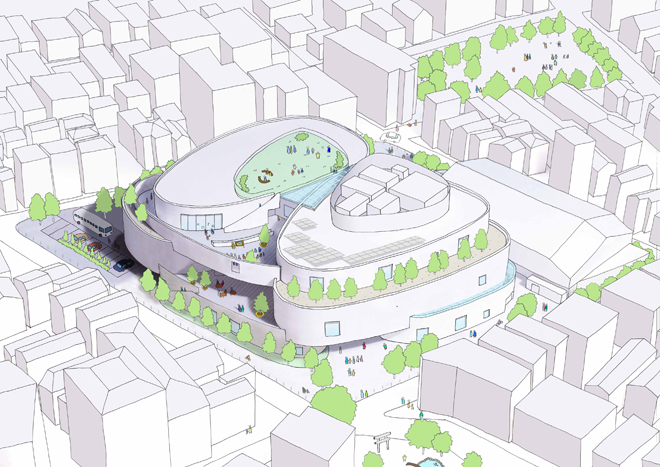
This is a multifunctional facility that combines an art museum intended to preserve memories of his \"low city\" district during World War II and the postwar period with a community center and a library. We wanted to give this community art museum an architectural form that is attractive and symbolic of the community.
The space without intermediate supports created through the layering of ringed walls made of curved steel plate invokes the structural system tried in Tianjin Library. We call the column-less first-floor space the people square. It is a place that seniors and small children can visit any time. The large atrium leads to the museum and library and allows people to orient themselves in the building. The people square serves to connect nearby Kurishima Shrine and Chihaya Park, and people are free to pass through the space. It is hoped that the building will become a central facility used for club activities and local observances such as festivals.
We believe this will not seem opressive to the nearby residential district, wich is low-rise and high-density, because the building is stepped and has rounded corners. We wanted to make the building appear as friendly as possible to the surronding environment.
The space without intermediate supports created through the layering of ringed walls made of curved steel plate invokes the structural system tried in Tianjin Library. We call the column-less first-floor space the people square. It is a place that seniors and small children can visit any time. The large atrium leads to the museum and library and allows people to orient themselves in the building. The people square serves to connect nearby Kurishima Shrine and Chihaya Park, and people are free to pass through the space. It is hoped that the building will become a central facility used for club activities and local observances such as festivals.
We believe this will not seem opressive to the nearby residential district, wich is low-rise and high-density, because the building is stepped and has rounded corners. We wanted to make the building appear as friendly as possible to the surronding environment.
architects
Riken Yamamoto & Field Shop
Site area
5,699 ㎡
Building area
2,984 ㎡
Floor area
8,116 ㎡
construction
2015.
BREEZE -YONGSAN INTERNATIONAL BUSINESS DISTRICT R2 BLOCK -
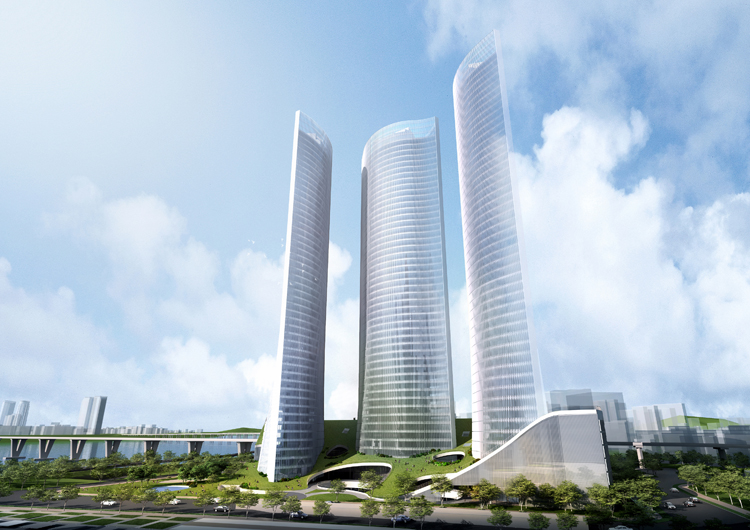
Three 47 story residential towers with 7-story podium are located at the outer west edge of the Yongsan International Business Development in Seoul . In close proximity of the waterfront R2 site offers unintimidated views of the Han River. The Han River becomes the main point of reference at the design process. The shape of the river follows geographic parameters. The shape of the towers is defined by the views it provides to and from the river to evoke the impression of a fabric softly moving in the breeze. The position of towers results from a careful examination of diverse parameters of the urban context: wind force, natural sunlight, and view axes.
The shape of towers is subtly changing from the ground floor level and becomes gradually slender toward 20th floor level and subsequently stays in the same shape. The lower part blends with retails, residential lobbies and amenity area. The upper part mainly consists of residential units. In order to accommodate the requirement of the floor area of each program the lower part of the towers is enlarged and uniquely shaped with a gentle undulating rim whereas the upper part have the same floor plan. Furthermore, the shape with thin edge gives sufficient conditions for structure stabilities against wind load and the wide frontage facade allowing adequate sunlight and flesh air to the interior space.
The podium includes officetel [studio apartment] and retail “forum” in the form of a sloped green hill which is raised above the site area connecting to the small park at the south of the perimeter. The roof of the green hill combines three towers creating the continuous landscape from the site as a secondary “ground floor” and provides the open space for the public with urban activities. Under the green hill, the retail “forum” with a maximum ceiling height of 25 meters is designed between the towers and officetel podium and connects the city side and river front side.
The shape of towers is subtly changing from the ground floor level and becomes gradually slender toward 20th floor level and subsequently stays in the same shape. The lower part blends with retails, residential lobbies and amenity area. The upper part mainly consists of residential units. In order to accommodate the requirement of the floor area of each program the lower part of the towers is enlarged and uniquely shaped with a gentle undulating rim whereas the upper part have the same floor plan. Furthermore, the shape with thin edge gives sufficient conditions for structure stabilities against wind load and the wide frontage facade allowing adequate sunlight and flesh air to the interior space.
The podium includes officetel [studio apartment] and retail “forum” in the form of a sloped green hill which is raised above the site area connecting to the small park at the south of the perimeter. The roof of the green hill combines three towers creating the continuous landscape from the site as a secondary “ground floor” and provides the open space for the public with urban activities. Under the green hill, the retail “forum” with a maximum ceiling height of 25 meters is designed between the towers and officetel podium and connects the city side and river front side.
Function
Residential, Officetel and Retail
architects
Riken Yamamoto & Field Shop
structural eng.
Arup Japan
structural mech.
Arup Japan
Site area
14,994 ㎡
Building area
8,830 ㎡
Floor area
189,506 ㎡
Structure
188.2m RC+SC
construction
2017.
Kanagawa Arts Theatre × Chiten "Tokatonton to(The Sound of Hammering And)"
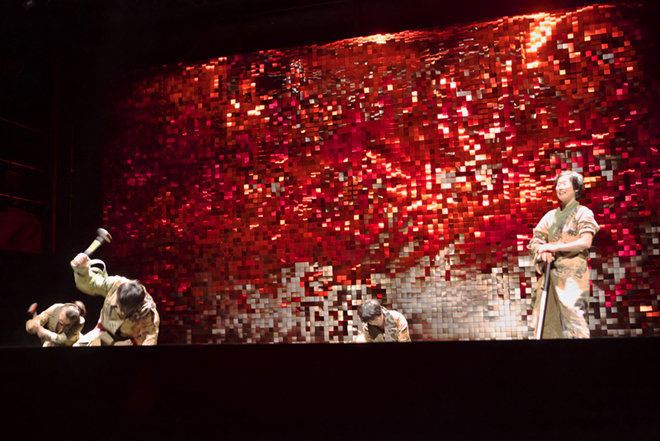
construction
2012.2
other
photo by Tsukasa Aoki
Home-For-All in Heita



“Home for all” is a project developed by a number of different architects along the Tohoku area, the location affected by the 2011 tsunami in Japan. Riken Yamamoto’s office intervened in “Heita”, located in Iwate prefecture, contributing with different ideas, to improve the inhabitants living conditions, and helping with physical support.
One of the most successful ideas was to distribute the temporary housing units facing each other so that the access to the units generate a main entrance space, promoting the idea of community.
Besides the living units, Riken Yamamoto’s office proposed a “community building” where people can meet and share experiences. This place was designed as a connection item, especially during the evening hours, so that people can talk and socialize with neighbors. The structural system employed is similar to an umbrella. Under the main central structural column, a chimney is placed, around which people can come together during the cold nights.
Students, volunteers and local residents participated in the construction of the building, strengthening the relationship between people who had lost everything.
One of the most successful ideas was to distribute the temporary housing units facing each other so that the access to the units generate a main entrance space, promoting the idea of community.
Besides the living units, Riken Yamamoto’s office proposed a “community building” where people can meet and share experiences. This place was designed as a connection item, especially during the evening hours, so that people can talk and socialize with neighbors. The structural system employed is similar to an umbrella. Under the main central structural column, a chimney is placed, around which people can come together during the cold nights.
Students, volunteers and local residents participated in the construction of the building, strengthening the relationship between people who had lost everything.
Function
Community center
architects
Riken Yamamoto & FIeld Shop
structural eng.
Atsushi Sato Structural Design Office
Building area
64 ㎡
Floor area
42 ㎡
construction
2012.5
Local Community Area
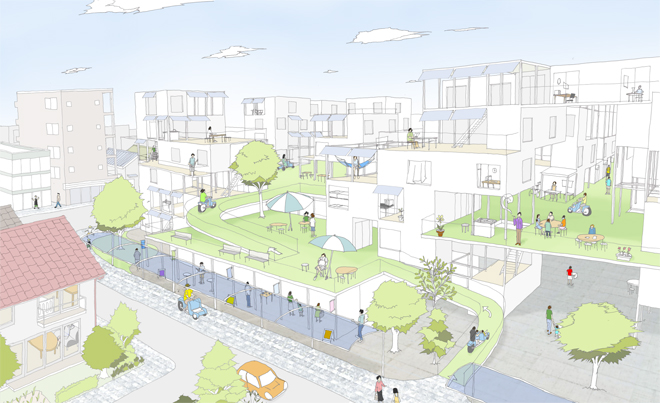
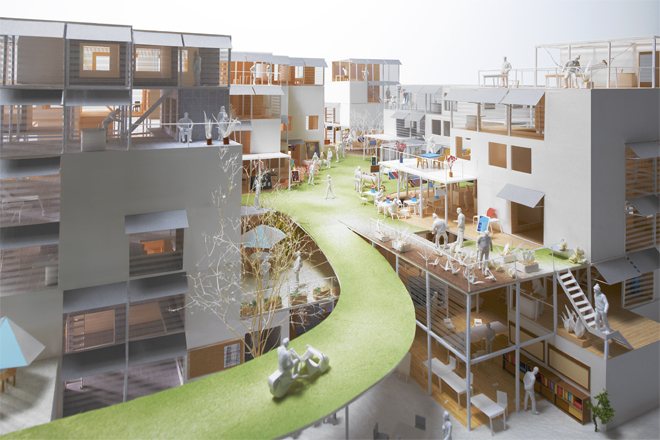
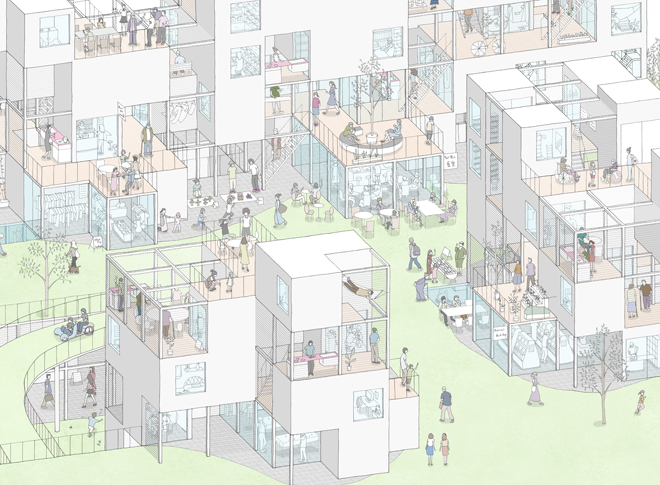
How People Live in a Local Community
Today’s system of government is premised on self-help by the one house = one family unit. However, that social unit is becoming increasingly useless. Then what other ways of dwelling are there? What sort of administrative system is possible? Let us consider a unit composed of approximately 500 people. It could just as well be 400 or 700 people. The number will differ depending on the characteristic of the locality. This will be one ”local community area”. What ways of dwelling are possible for these people? What system of mutual-aid can we develop?
First, housing. Housing for sale is too burdensome for individuals. Such a form of housing is unable to adapt to major social changes. Housing will therefore be for rental. As much space as possible will be given over to common areas, and areas over which individuals have exclusive rights will be made small. Here, we call the housing from which the local community area is composed ”ie”. An ”ie” is made up of a ”mise”and a ”nema”. This room organization is entirely different from that of the traditional LDK-type unit (Living- Dining- Kitchen). The “mise” is glazed on the outside. The “nema” is a highly private place. People are free to rent space any way they want. They can, for example, rent a large “mise” portion and use it literally as a shop. It can also be used as an office or an atelier. Or it can be a porch-like space where an elderly person can take a nap or a child can play. People can also rent a large “nema” portion and create an “ie” that is like a highly private traditional house. Toilets, showers and mini-kitchens will be shared. Toilets and showers will be made as spacious as possible and provided in sufficient numbers. Even so, this arrangement will be far more efficient than providing such facilities for each one house = one family unit. The relationship between areas over which individuals have exclusive rights and shared areas has been completely reconsidered. Relationships having to do with energy, transportation, care, nursing, welfare and local economy on which one house = one family was premised have been all reconsidered. Those reconsidered relationships constitute a local community area.
Today’s system of government is premised on self-help by the one house = one family unit. However, that social unit is becoming increasingly useless. Then what other ways of dwelling are there? What sort of administrative system is possible? Let us consider a unit composed of approximately 500 people. It could just as well be 400 or 700 people. The number will differ depending on the characteristic of the locality. This will be one ”local community area”. What ways of dwelling are possible for these people? What system of mutual-aid can we develop?
First, housing. Housing for sale is too burdensome for individuals. Such a form of housing is unable to adapt to major social changes. Housing will therefore be for rental. As much space as possible will be given over to common areas, and areas over which individuals have exclusive rights will be made small. Here, we call the housing from which the local community area is composed ”ie”. An ”ie” is made up of a ”mise”and a ”nema”. This room organization is entirely different from that of the traditional LDK-type unit (Living- Dining- Kitchen). The “mise” is glazed on the outside. The “nema” is a highly private place. People are free to rent space any way they want. They can, for example, rent a large “mise” portion and use it literally as a shop. It can also be used as an office or an atelier. Or it can be a porch-like space where an elderly person can take a nap or a child can play. People can also rent a large “nema” portion and create an “ie” that is like a highly private traditional house. Toilets, showers and mini-kitchens will be shared. Toilets and showers will be made as spacious as possible and provided in sufficient numbers. Even so, this arrangement will be far more efficient than providing such facilities for each one house = one family unit. The relationship between areas over which individuals have exclusive rights and shared areas has been completely reconsidered. Relationships having to do with energy, transportation, care, nursing, welfare and local economy on which one house = one family was premised have been all reconsidered. Those reconsidered relationships constitute a local community area.
Function
Housing
architects
Riken Yamamoto & FIeld Shop
construction
2012 (Theoretical Project).
Yokohama City University



This project is one of the various buildings composing the Yokohama City University campus.
The building is located near the main gate and is to become the new face of the entire campus. Rather than trying to achieve a symbolic value in the design and architectural form, we proposed that the activity of students and faculty should become the symbol.
The project is composed by three elements.
[1] The Student Office
The front part of the building, which we call The Student Office is facing the main gate on the square. It is where all the students activity i taking place. The intelectual activity can be seen from the main square in front of it and will become the symbol of the campus.
[2] The Presentation Gallery
There is a large atrium that we called Presentation Gallery in the center of the construction, where people can meet, exhibitions can be organized or different events could take place, becoming this way the central place of communication.
[3] The Classroom and Office Building
In the rear of the building we aggregated the offices and classrooms.
This part is a robust rainforced concrete structure, bearing the horizontal force of the entire building.
It is expected that these three elements create a whole new learning environment, to become a symbol with activities they undertake.
The building is located near the main gate and is to become the new face of the entire campus. Rather than trying to achieve a symbolic value in the design and architectural form, we proposed that the activity of students and faculty should become the symbol.
The project is composed by three elements.
[1] The Student Office
The front part of the building, which we call The Student Office is facing the main gate on the square. It is where all the students activity i taking place. The intelectual activity can be seen from the main square in front of it and will become the symbol of the campus.
[2] The Presentation Gallery
There is a large atrium that we called Presentation Gallery in the center of the construction, where people can meet, exhibitions can be organized or different events could take place, becoming this way the central place of communication.
[3] The Classroom and Office Building
In the rear of the building we aggregated the offices and classrooms.
This part is a robust rainforced concrete structure, bearing the horizontal force of the entire building.
It is expected that these three elements create a whole new learning environment, to become a symbol with activities they undertake.
Function
University
architects
Riken Yamamoto & Field Shop
structural eng.
Structure Plan Plus One
structural mech.
Comprehensive facility planning
Site area
85194.85 ㎡
Building area
1446.37 ㎡
Floor area
4042.98 ㎡
Structure
5 Floors above ground
construction
2016.4
House Vision
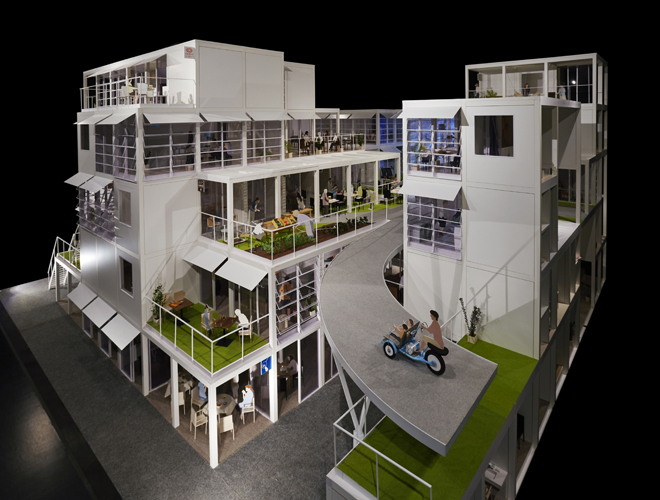
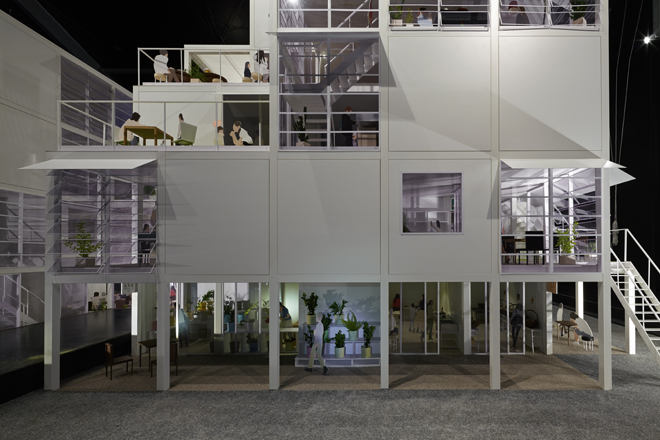
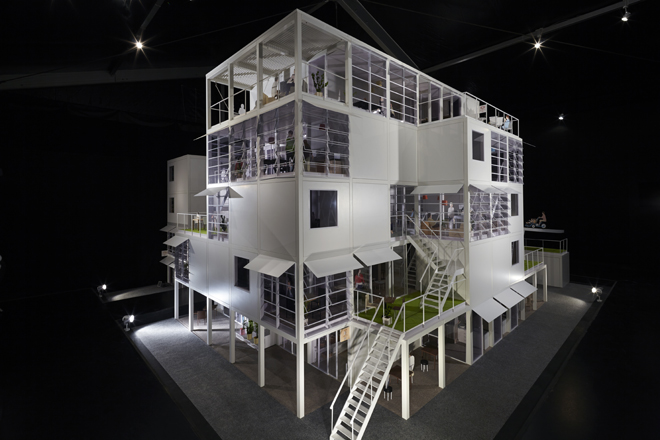
In March 2013 an exhibition called House Vision took place in Tokyo. It was composed of 8 proposals from different Japanese architects together with furniture, electronic and mobility companies. The main purpose of the exhibition was to search for ideas on how people could live in the house of the future. Therefore, the different architects and companies proposed al kinds of visionary ideas together with the latest technology.
We participated in the exhibition developing one of the 8 proposals. It was a great opportunity to apply the theoretical concepts developed for the Local Community Area. We used a model in scale 1 to 5 to try to make the ideas and concepts of the local community area clear and understandable for the public.
The main structure of the model was done with steel. The whole model reached a weight of 6000kg and a height of 3 meters. The grid structure was based on a module of 54cm x 54cm x 60cm done with square pipes of 40 x 40 mm.
We participated in the exhibition developing one of the 8 proposals. It was a great opportunity to apply the theoretical concepts developed for the Local Community Area. We used a model in scale 1 to 5 to try to make the ideas and concepts of the local community area clear and understandable for the public.
The main structure of the model was done with steel. The whole model reached a weight of 6000kg and a height of 3 meters. The grid structure was based on a module of 54cm x 54cm x 60cm done with square pipes of 40 x 40 mm.
Function
Housing
architects
Riken Yamamoto & Field Shop
construction
2013.4
How to make a city
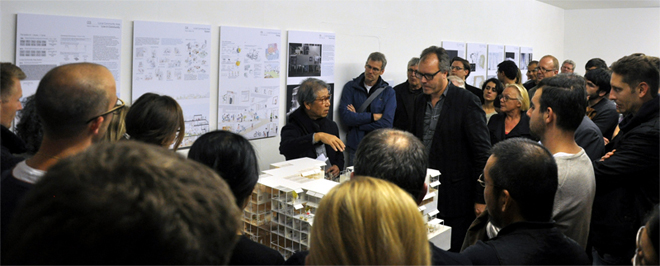
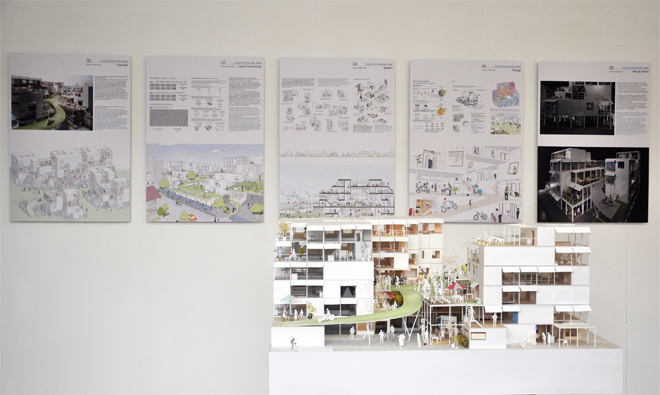
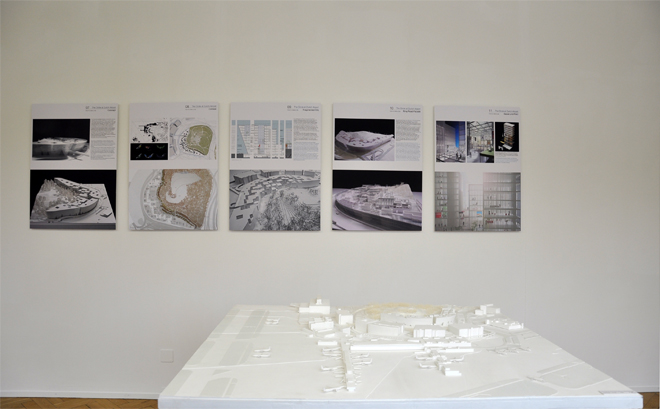
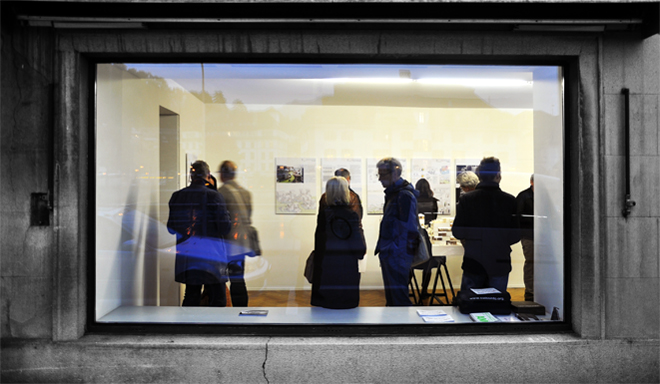
The exhibition ” How to make a city ” held in Luzern (Switzerland) from the 16. October to the 09. November 2013 had as main topic the high density city in the 21st century from Riken Yamamoto’s point of view.
Riken Yamamoto showed his theoretical work, his work in progress and his build work with the aid of three projects of different scales, but with parallel concepts.
The idea of a life in community and thus the interrelation between the citizens and inhabitants of his projects is of main importance for him and this results in a more rich architecture with a special quality.
It is architecture for the people. Architecture for a society that should be more tied up and interrelated, giving rise to new and more interesting exchanges between itself.
The three projects shown in the exhibition, ” Local Community area ” (theoretical project), Pangyo housing (South Korea) and The Circle at Zurich Airport (Switzerland), explore the idea of community and density in a city or complex, at different levels and in disparate environments. The three buildings propose a new way of living together, improving the citizens day life.
Riken Yamamoto showed his theoretical work, his work in progress and his build work with the aid of three projects of different scales, but with parallel concepts.
The idea of a life in community and thus the interrelation between the citizens and inhabitants of his projects is of main importance for him and this results in a more rich architecture with a special quality.
It is architecture for the people. Architecture for a society that should be more tied up and interrelated, giving rise to new and more interesting exchanges between itself.
The three projects shown in the exhibition, ” Local Community area ” (theoretical project), Pangyo housing (South Korea) and The Circle at Zurich Airport (Switzerland), explore the idea of community and density in a city or complex, at different levels and in disparate environments. The three buildings propose a new way of living together, improving the citizens day life.
architects
Riken Yamamoto & Field Shop
construction
2013.11
S-House
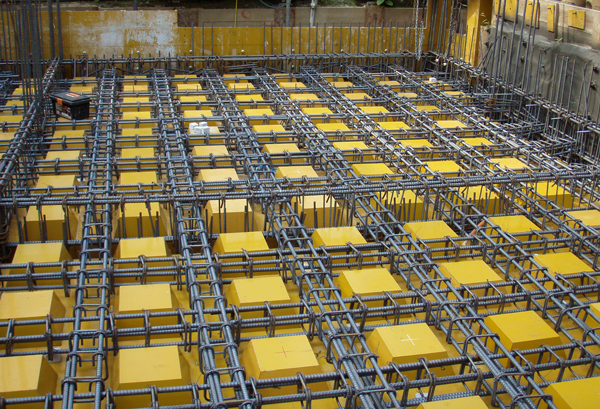
Site area
345 ㎡
Building area
200 ㎡
Floor area
700 ㎡
Structure
RC
construction
2019.
apartment
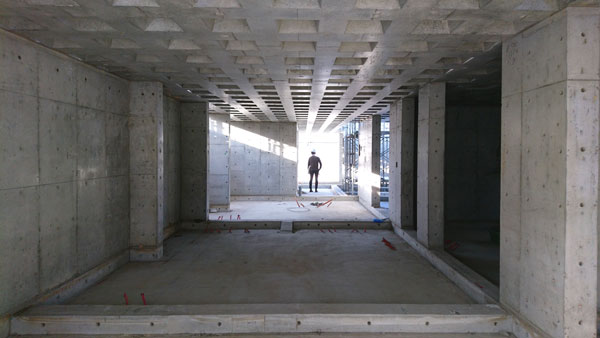
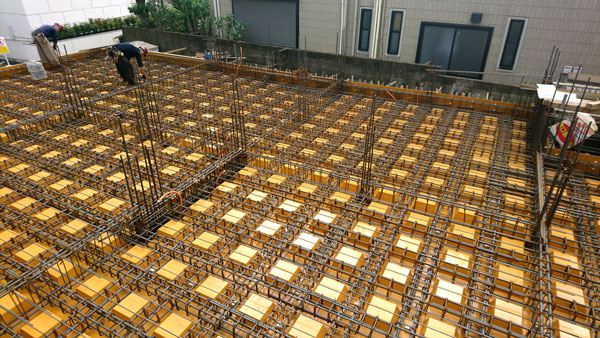
architects
Riken Yamamoto & Field Shop
Site area
345.89 ㎡
Building area
202.26 ㎡
Floor area
706.28 ㎡
construction
2019.3
Taoyuan Museum of Art
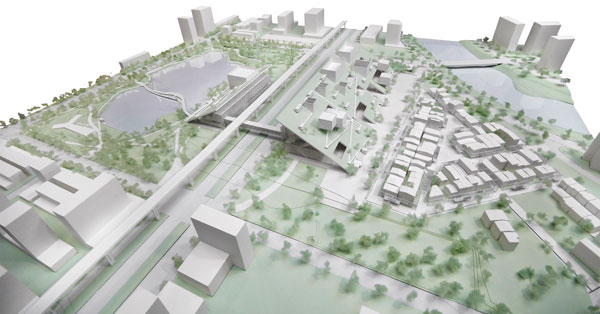
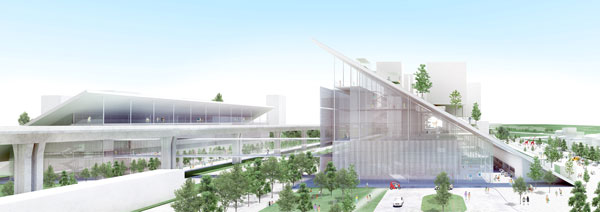
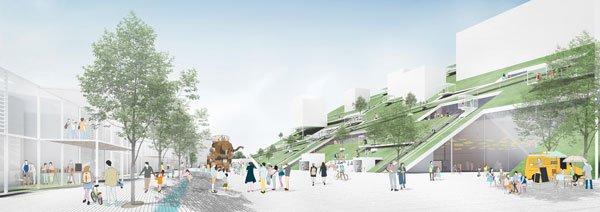
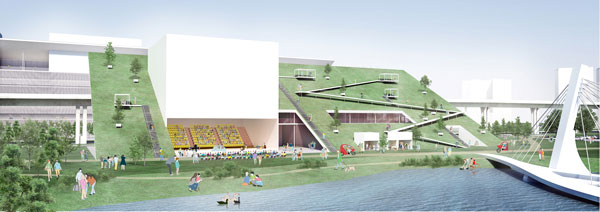
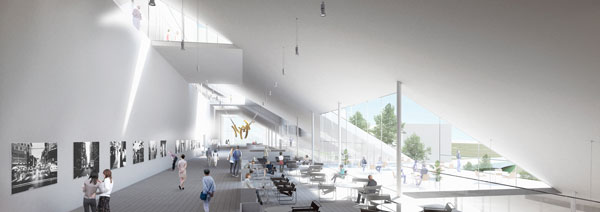
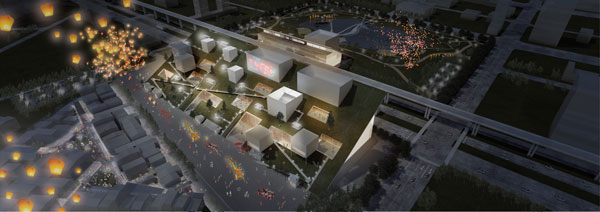
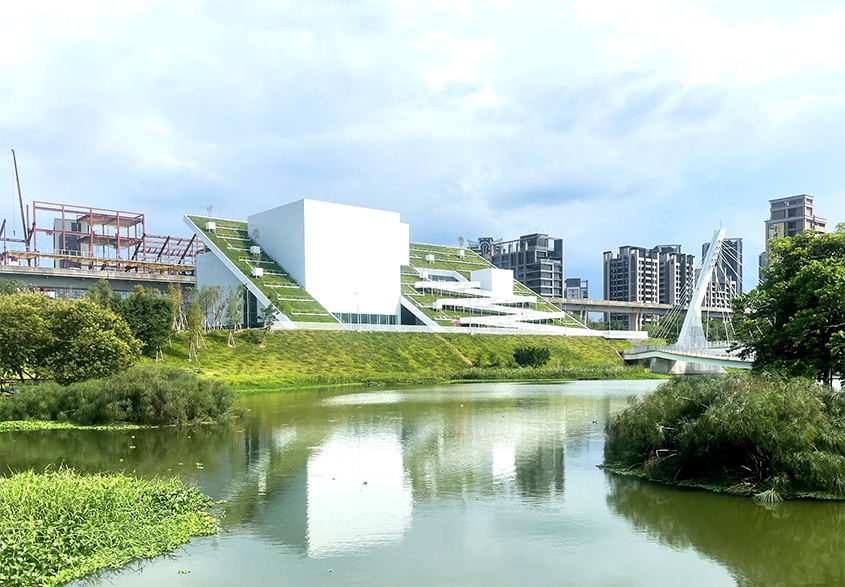
Taoyuan Museum of Art is divided into two buildings: the art museum building and the childrens museum building, both designed in consideration of the relationship with the surrounding environment.To the south is a residential complex built by a private developer as a mini-development, and to the north are a forest and a lake rich in nature. The surrounding ground is raised to form a hill-like slope with ramps and pergolas to host park-like activities.With a 30-degree incline, the hill has several holes that form terraces from where people can enter as if crawling under the roof. Tucked between the roof and the interior exhibition rooms are rich spaces by terraced various activities such as cafe and library. The museum can be enjoyed while always feeling the relationship with the outside.
Function
Museum
construction
2026.
Tokyo Weld Technical Center
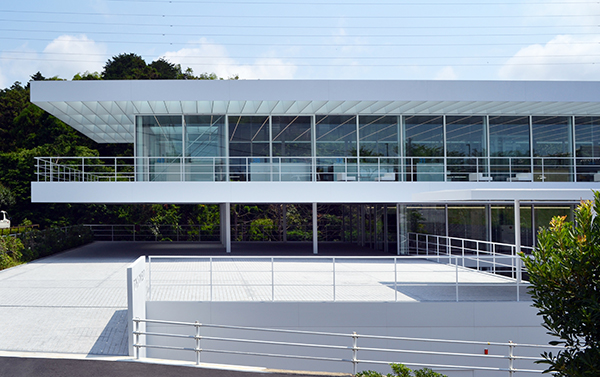
Site area
2940.79 ㎡
Building area
1473.78 ㎡
Floor area
2946.83 ㎡
construction
2019.6
THE CIRCLE at Zürich Airport
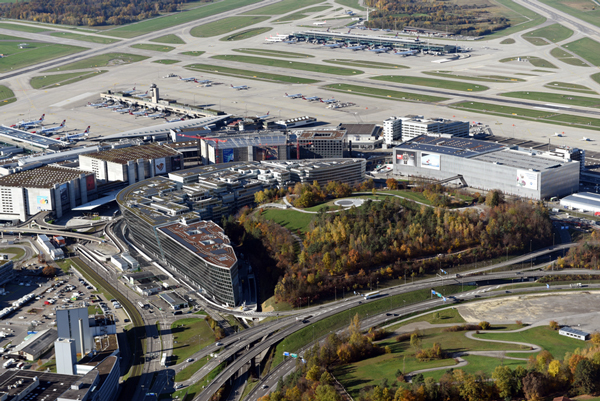
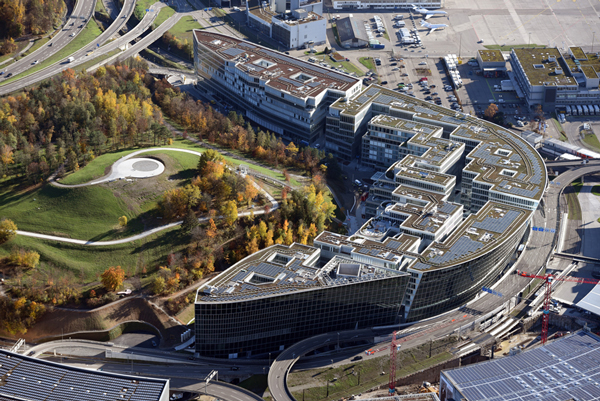
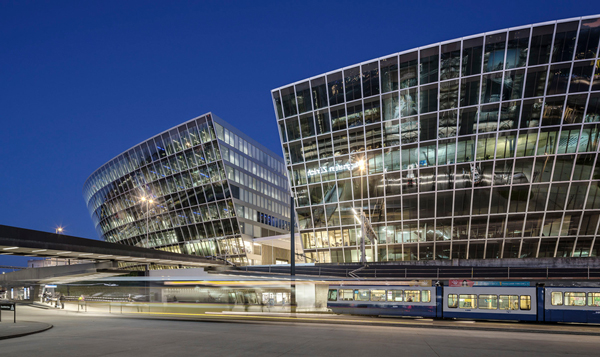
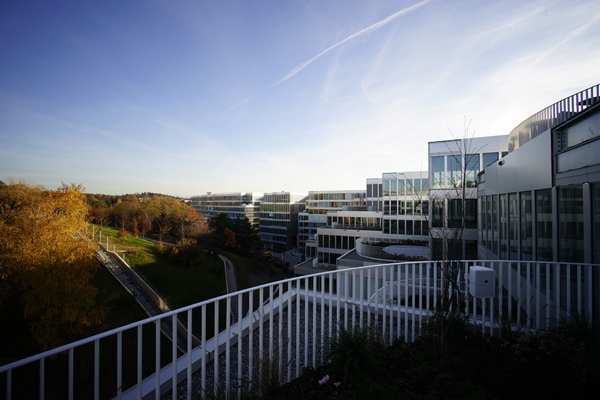
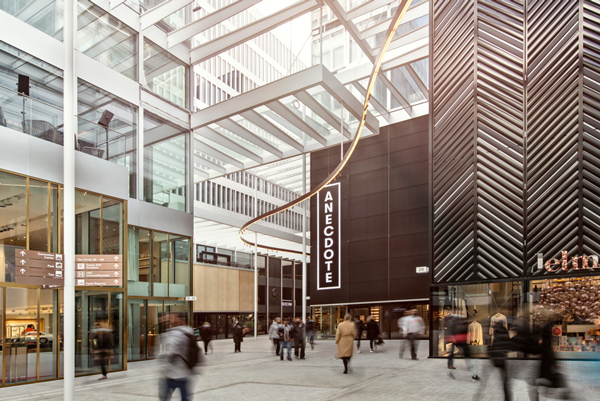
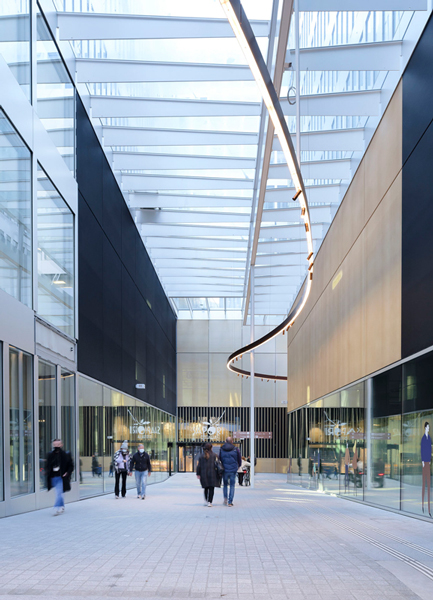
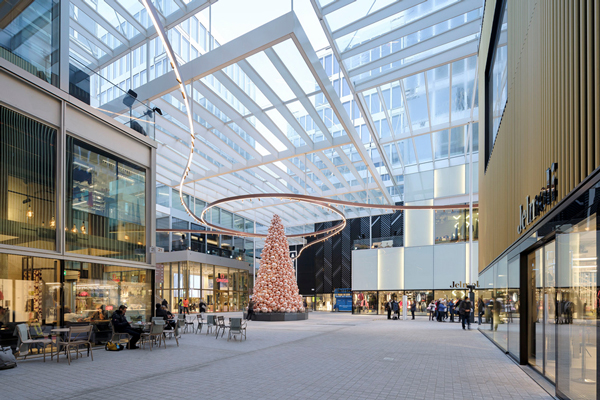
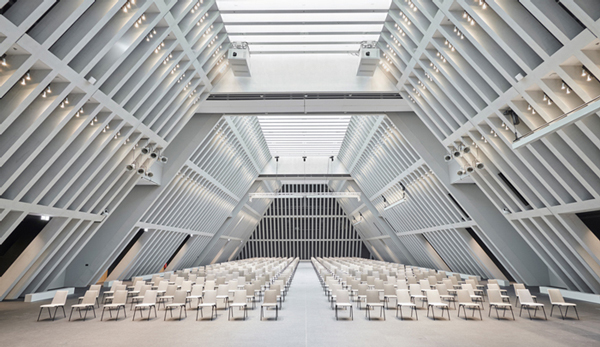
The competition program made the following requirements.
Swissness: The Circle at Zurich Airport is to express in its compact spaces not only the high standard of living in Switzerland but the beauty of contemporary Switzerland.
Surprise: The Circle at Zurich Airport is to be full of surprises and to inspire visitors and users. Spaces are to be created that will delight visitors by a distinctive combination of extraordinary services and diverse and changing perspectives.
Connections to the World: The Circle at Zurich Airport is to be as comfortable as home for cosmopolitan international travelers. To be connected to the rest of the world means being a place where people from all over the world meet and services responsive to their needs are provided.
Design Outline
Concept
1. Swissness
What is Swissness? We architects were asked to answer that question. Swissness is precision. That is our belief. We believe that precision is the outstanding characteristic of Swiss design, from small objects such as watches to large objects such as buildings. Its precision has special significance in the world not only in design but in economic service systems symbolized by insurance and banks, political and administrative systems and medical technology. We believe Swissness, even before it is made manifest in form, is a way of thinking developed over time by the people of Switzerland. We want to give thorough expression to that Swiss precision. This architecture of extremely slender columns is a symbol of that Swissness. The columns, made extremely slender through PC construction technology, will produce an architecture of unprecedented delicacy.
2. A New Town, the Circle
The Circle is neither a nineteenth-century city nor a twentieth-century city intended for rational and economic ends but an entirely new city for the new lifestyles of the twenty-first century. There are bound to be new ways to enjoy a city that are completely different from the ways of the past. This is a city for everyday life as well as for special ways of life and special events. People gather from around the world to experience those special ways of life and special events. However, this is neither a fictional community such as Disneyland nor a town organized solely for consumption but a creative city that will exert a powerful influence on the rest of the world.
3. Divers(c)ity
The medieval cities of Switzerland that are the actual centers of everyday life for people today are extremely flexible precisely because they retain their old structures. They may be used at times as a restaurant and at other times as a brand shop, and at still other times as a comfortable hotel. Two adjacent buildings may be used as one. Though their structure and design may remain unchanged, they can be used in an extremely flexible way because an extremely close relationship is established between urban infrastructure and architecture. That is the secret to their great durability. The Circle too is such a city. We would like to re-create the structure of a medieval city with entirely new technology, construction methods and design. Though it will be an entirely new design, it will seem somehow familiar to visitors.
-THE CIRCLE Official Website-
Swissness: The Circle at Zurich Airport is to express in its compact spaces not only the high standard of living in Switzerland but the beauty of contemporary Switzerland.
Surprise: The Circle at Zurich Airport is to be full of surprises and to inspire visitors and users. Spaces are to be created that will delight visitors by a distinctive combination of extraordinary services and diverse and changing perspectives.
Connections to the World: The Circle at Zurich Airport is to be as comfortable as home for cosmopolitan international travelers. To be connected to the rest of the world means being a place where people from all over the world meet and services responsive to their needs are provided.
Design Outline
Concept
1. Swissness
What is Swissness? We architects were asked to answer that question. Swissness is precision. That is our belief. We believe that precision is the outstanding characteristic of Swiss design, from small objects such as watches to large objects such as buildings. Its precision has special significance in the world not only in design but in economic service systems symbolized by insurance and banks, political and administrative systems and medical technology. We believe Swissness, even before it is made manifest in form, is a way of thinking developed over time by the people of Switzerland. We want to give thorough expression to that Swiss precision. This architecture of extremely slender columns is a symbol of that Swissness. The columns, made extremely slender through PC construction technology, will produce an architecture of unprecedented delicacy.
2. A New Town, the Circle
The Circle is neither a nineteenth-century city nor a twentieth-century city intended for rational and economic ends but an entirely new city for the new lifestyles of the twenty-first century. There are bound to be new ways to enjoy a city that are completely different from the ways of the past. This is a city for everyday life as well as for special ways of life and special events. People gather from around the world to experience those special ways of life and special events. However, this is neither a fictional community such as Disneyland nor a town organized solely for consumption but a creative city that will exert a powerful influence on the rest of the world.
3. Divers(c)ity
The medieval cities of Switzerland that are the actual centers of everyday life for people today are extremely flexible precisely because they retain their old structures. They may be used at times as a restaurant and at other times as a brand shop, and at still other times as a comfortable hotel. Two adjacent buildings may be used as one. Though their structure and design may remain unchanged, they can be used in an extremely flexible way because an extremely close relationship is established between urban infrastructure and architecture. That is the secret to their great durability. The Circle too is such a city. We would like to re-create the structure of a medieval city with entirely new technology, construction methods and design. Though it will be an entirely new design, it will seem somehow familiar to visitors.
-THE CIRCLE Official Website-
Site area
35,000 ㎡
Building area
20,000 ㎡
Floor area
255,750 ㎡
Structure
PC+RC, Steel
construction
2020.
Nagoya Zokei University




In 2022 Nagoya Zokei University moved from its current campus in Komaki to the city of Nagoya. The new campus is located next to Meijo Park, the home of Nagoya Castle Meijo Koen Station is right below the grounds. The building spans the station, which bisects the grounds into east and west. In other words, the building itself is a bridge. The place that corresponds to the bridge girder is a large open space that is 88m by 88m on the top floor. Nagoya Zokei University is an arts school. The campus move presented an opportunity to consolidate and reorganize the nine courses of study at the university into five fields. Courses such as Japanese-style painting, Western-style painting, sculpture, interior design, manga, illustration, CG, etc. will no longer be divided by skill, medium, application, or product availability. Instead, they have been reorganized according to their original purpose by considering first of all what the purpose of the art production activity or design activity is and who it is for. Research courses have been reorganized into the following five field.
1. Art Expression
2. Visual Literature
3. Community Area Design
4. Community Sense Design
5. Representation Design
The center of activity for these five fields is the 88 meter by 88meter large studio. It can be used like a shared office, providing opportunities for students from the different areas of study to interact with each other.
1. Art Expression
2. Visual Literature
3. Community Area Design
4. Community Sense Design
5. Representation Design
The center of activity for these five fields is the 88 meter by 88meter large studio. It can be used like a shared office, providing opportunities for students from the different areas of study to interact with each other.
Function
art university
architects
Riken Yamamoto & Field Shop
structural eng.
ARUP
structural mech.
ARUP
constructors
Obayashi Corporation
Site area
20,136.37 ㎡
Building area
10,465.21 ㎡
Floor area
20,881.34 ㎡
construction
2022.1
